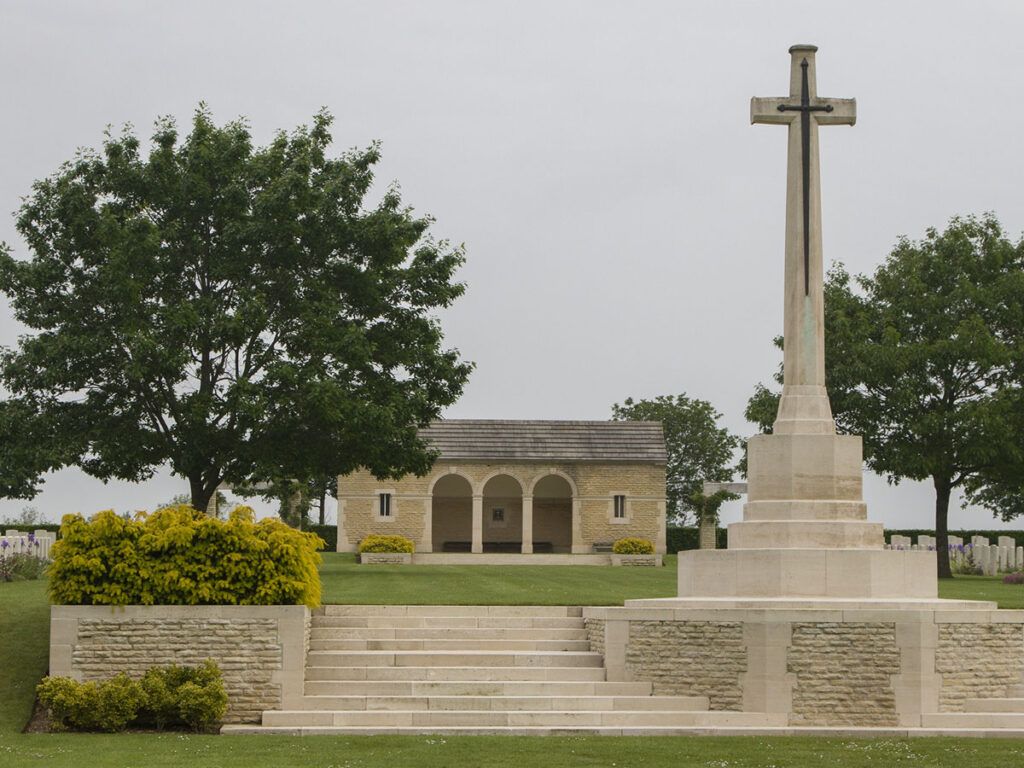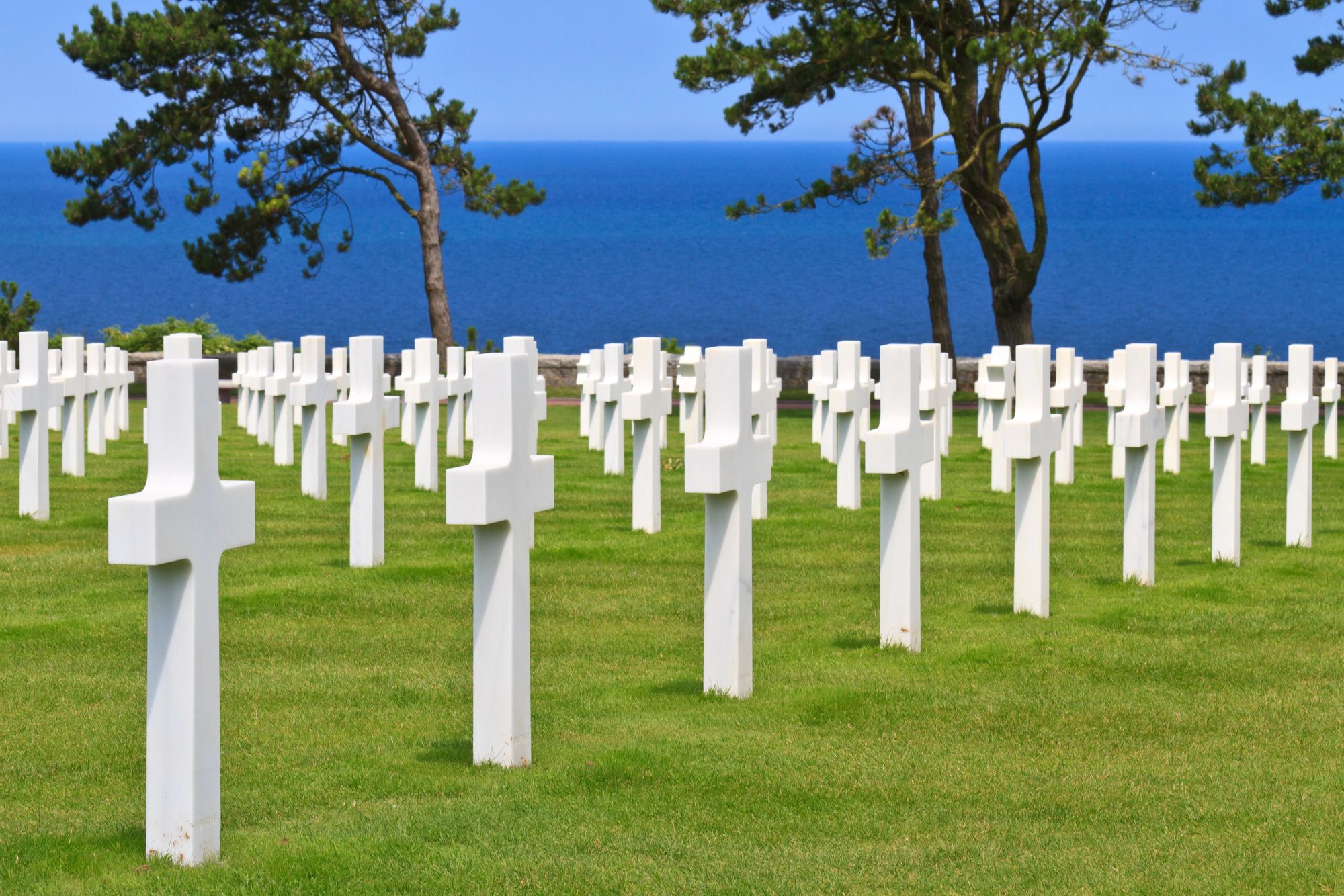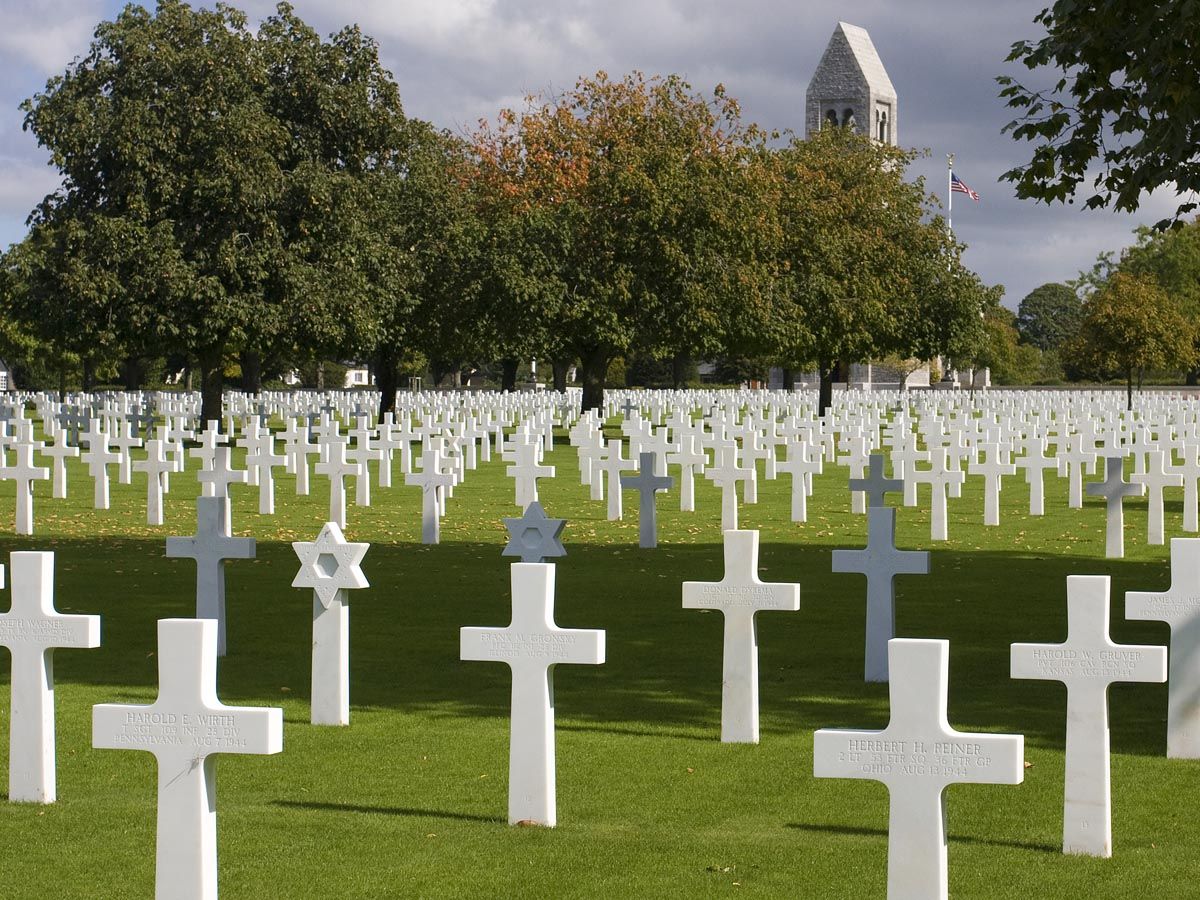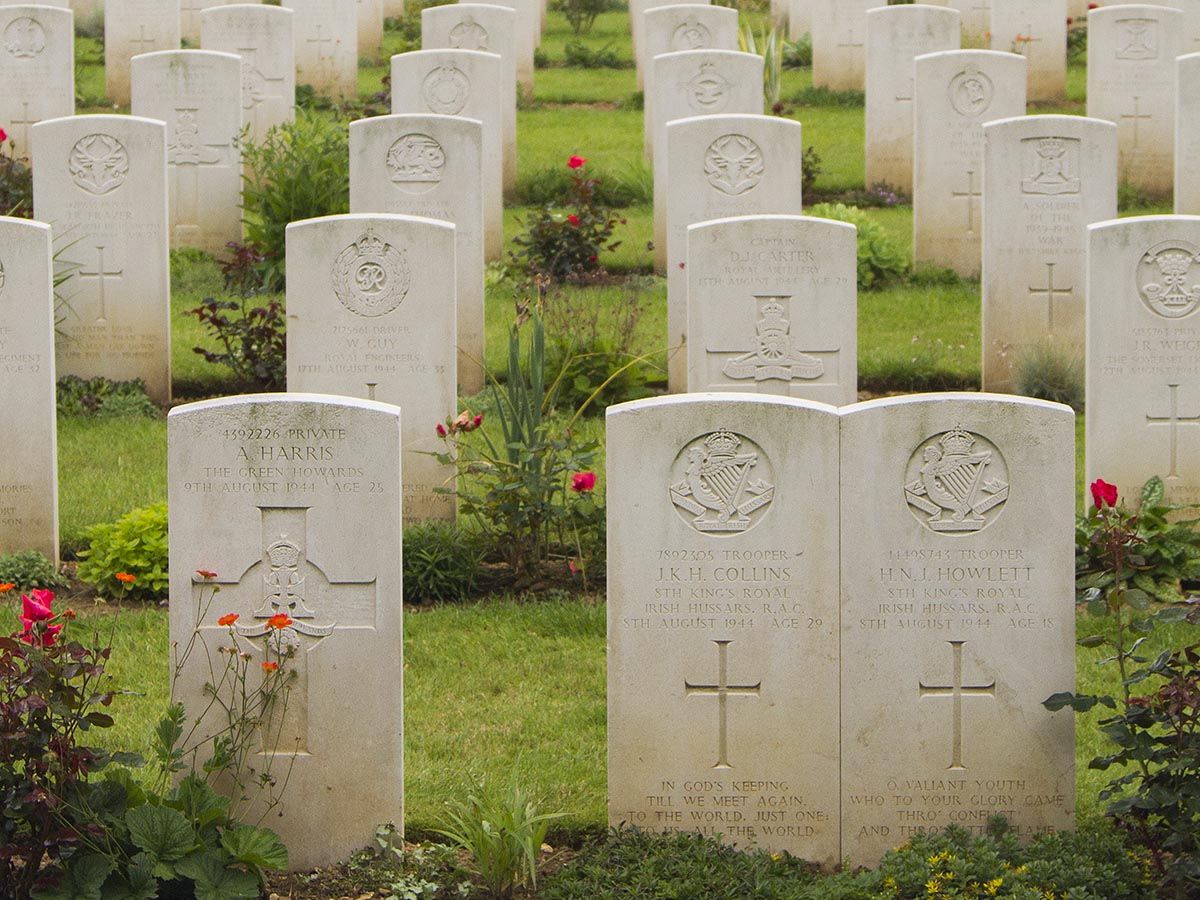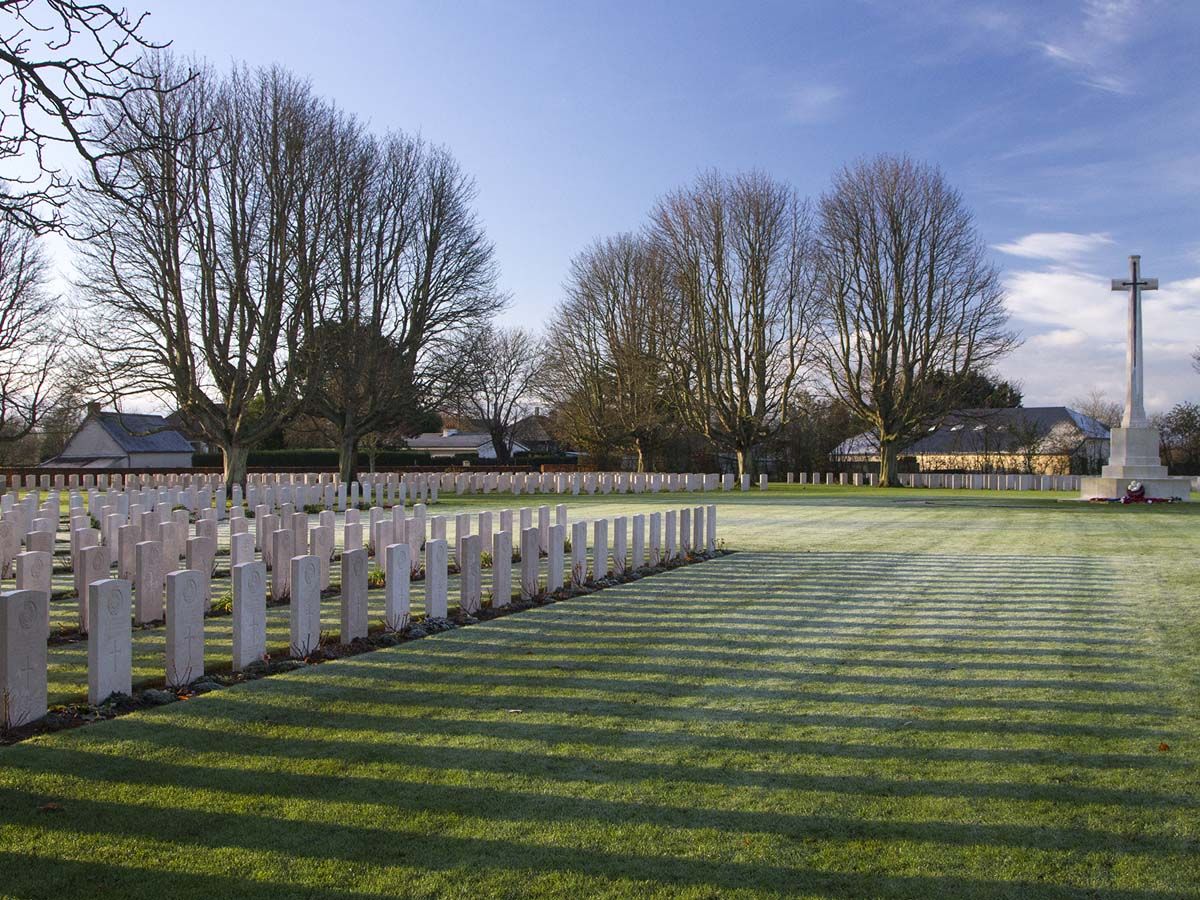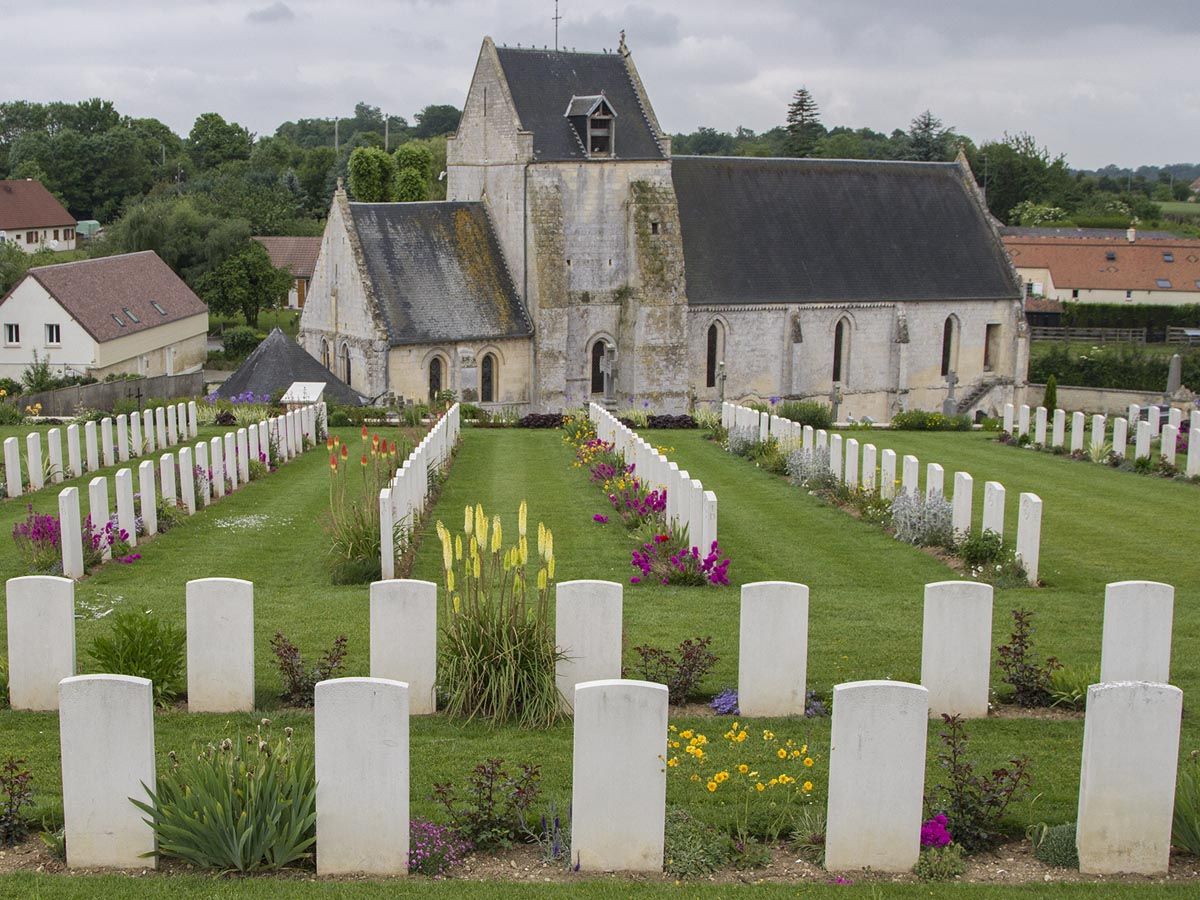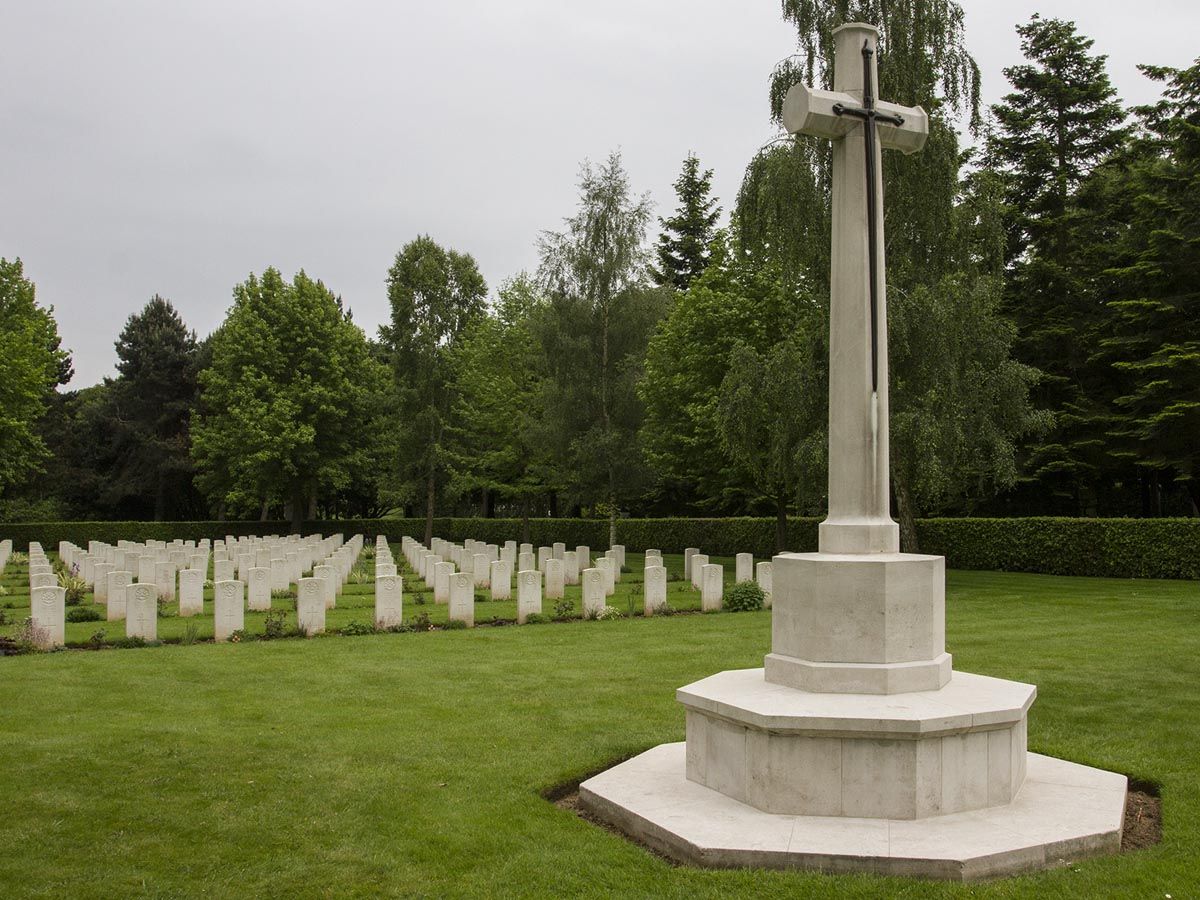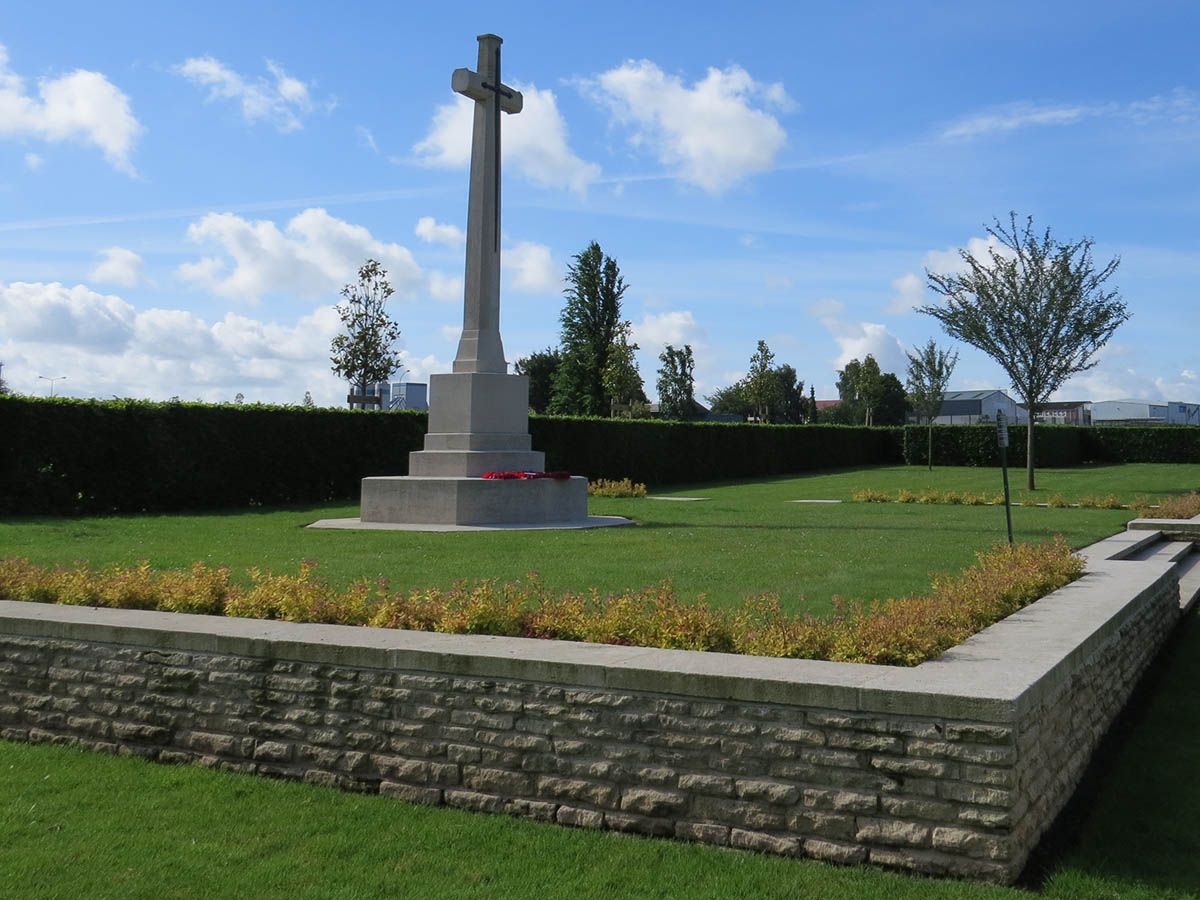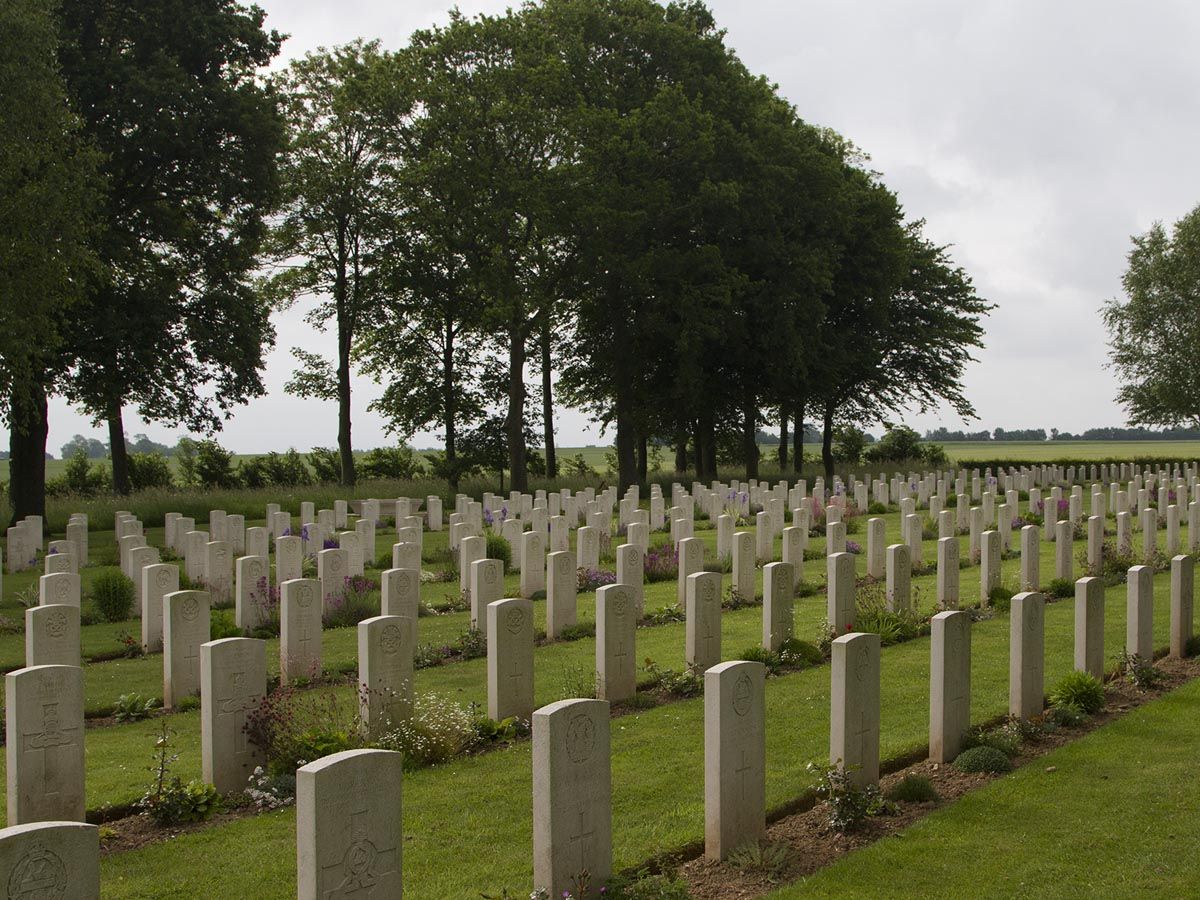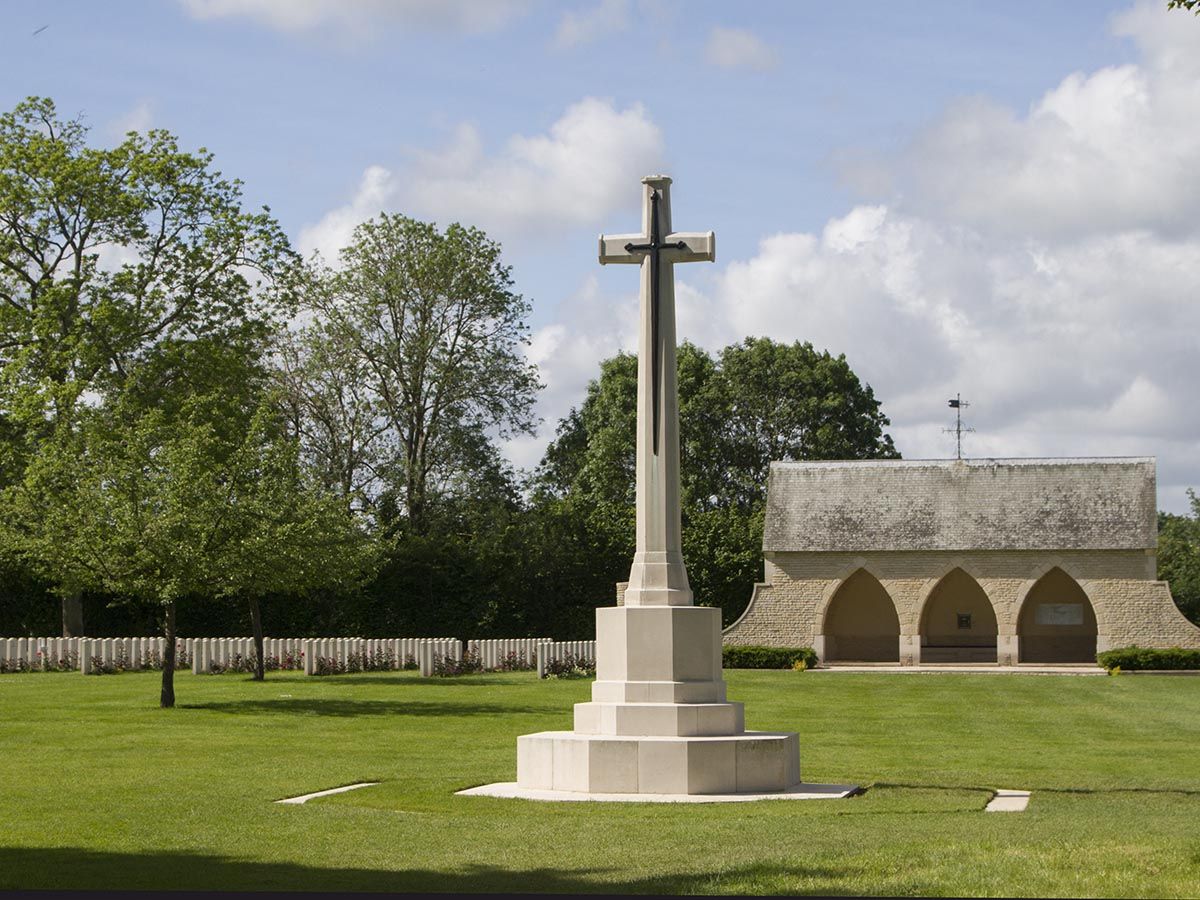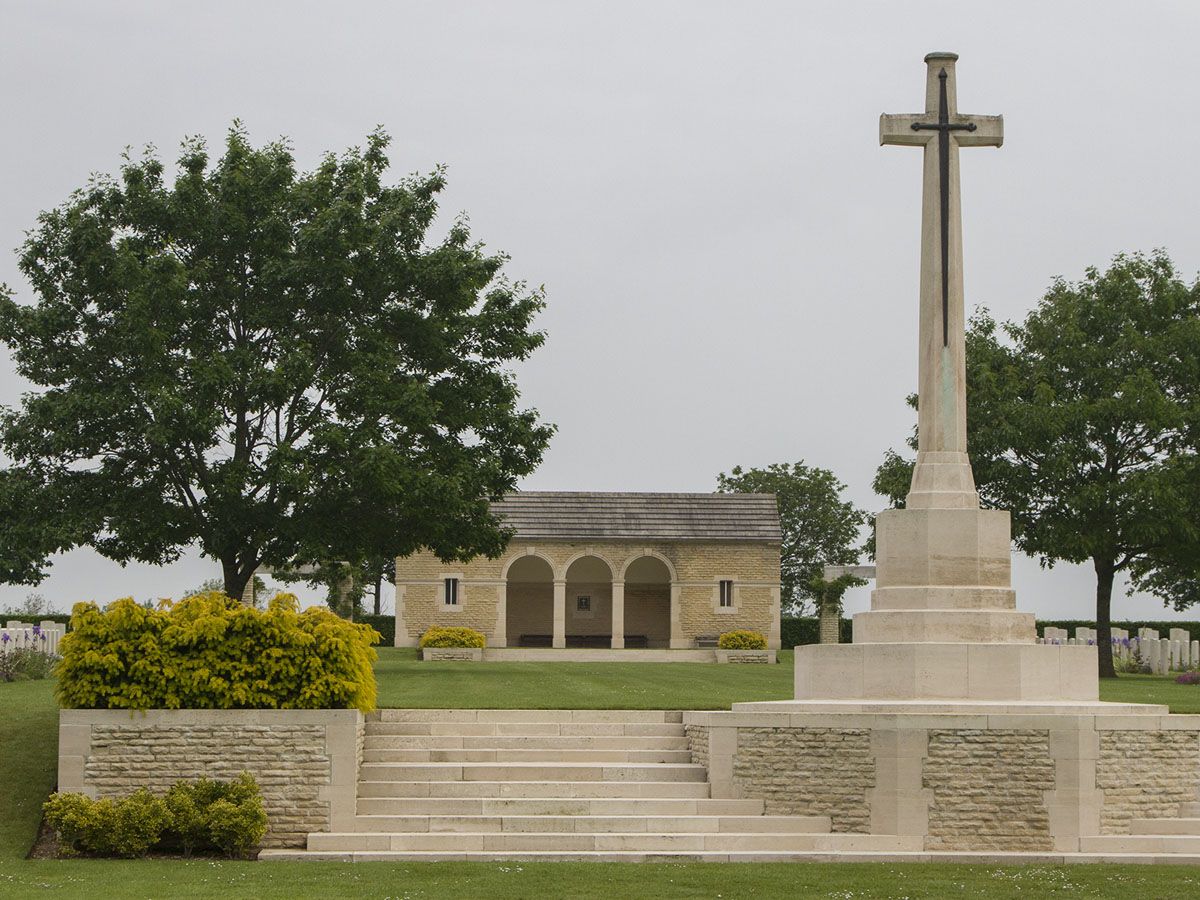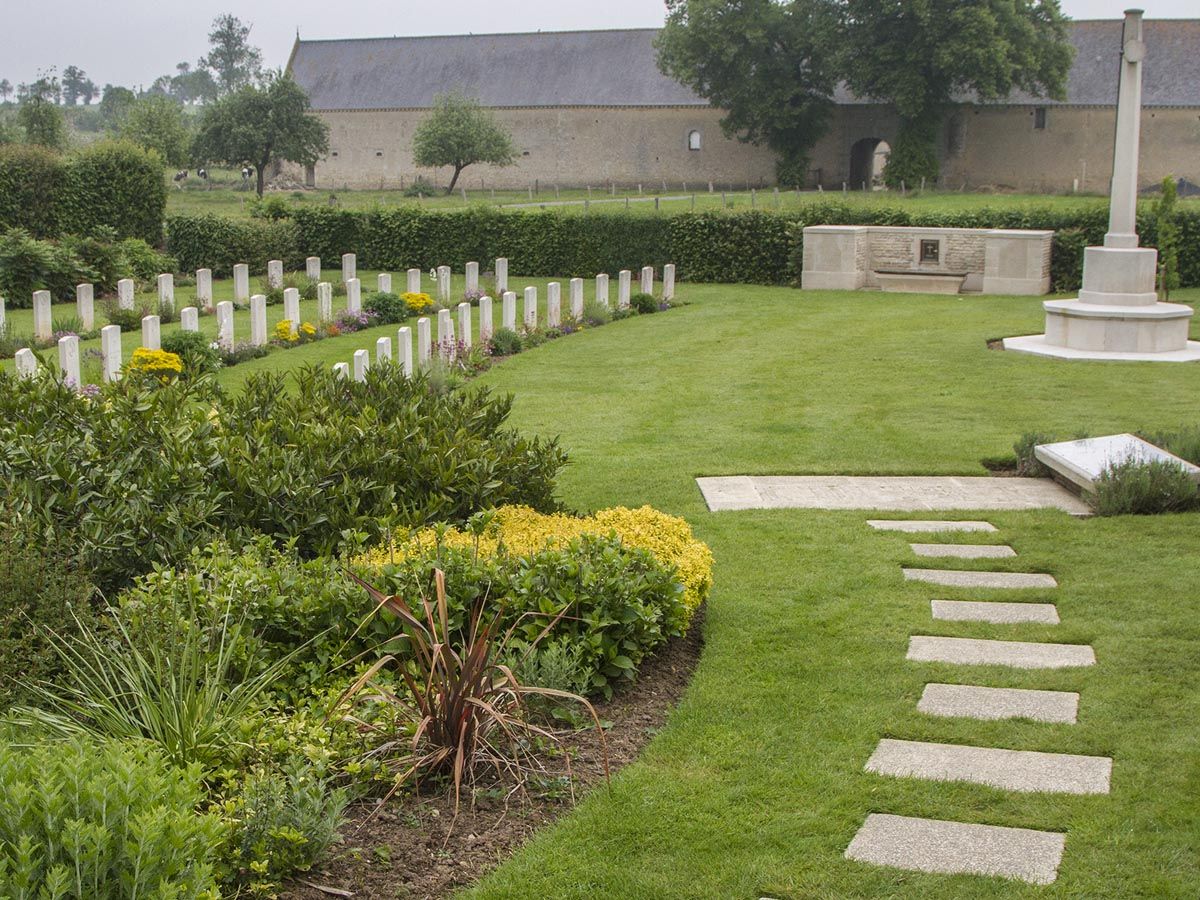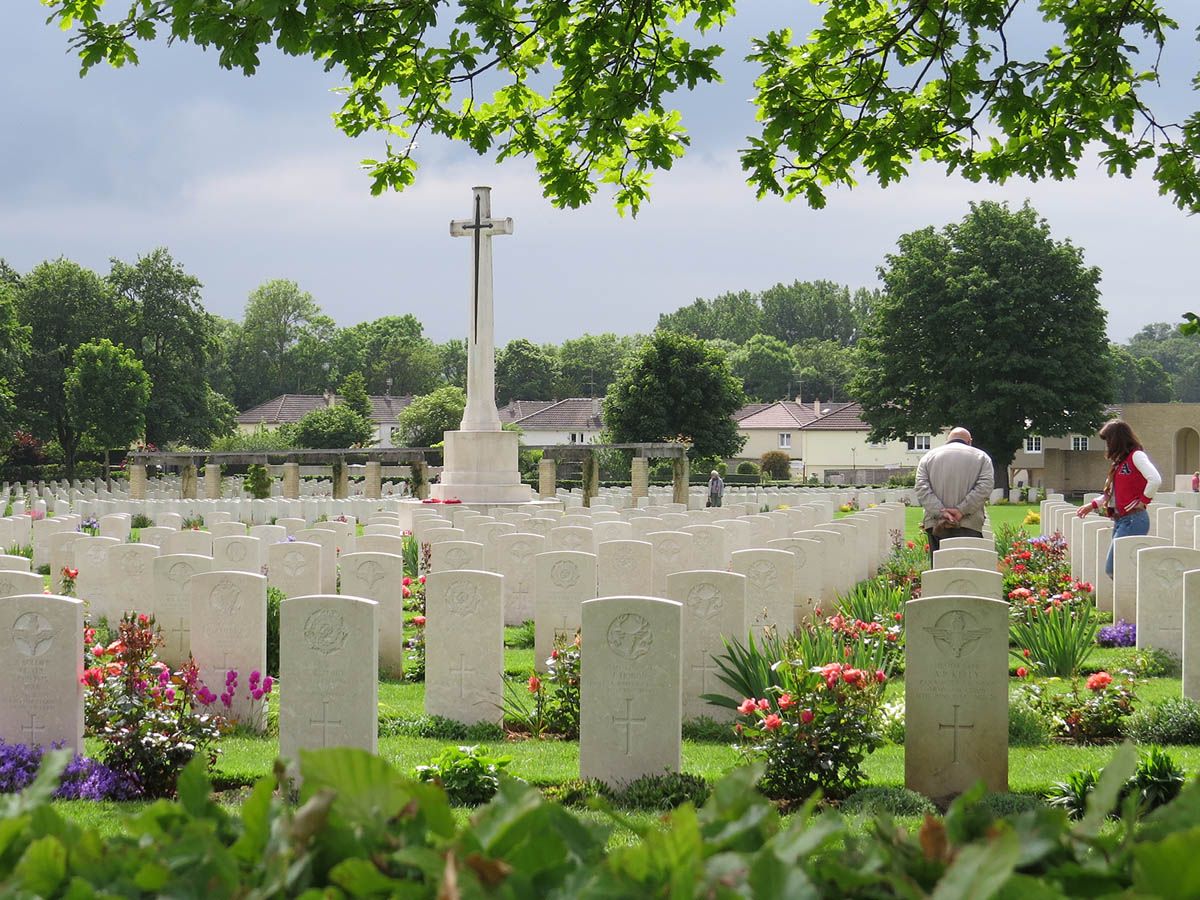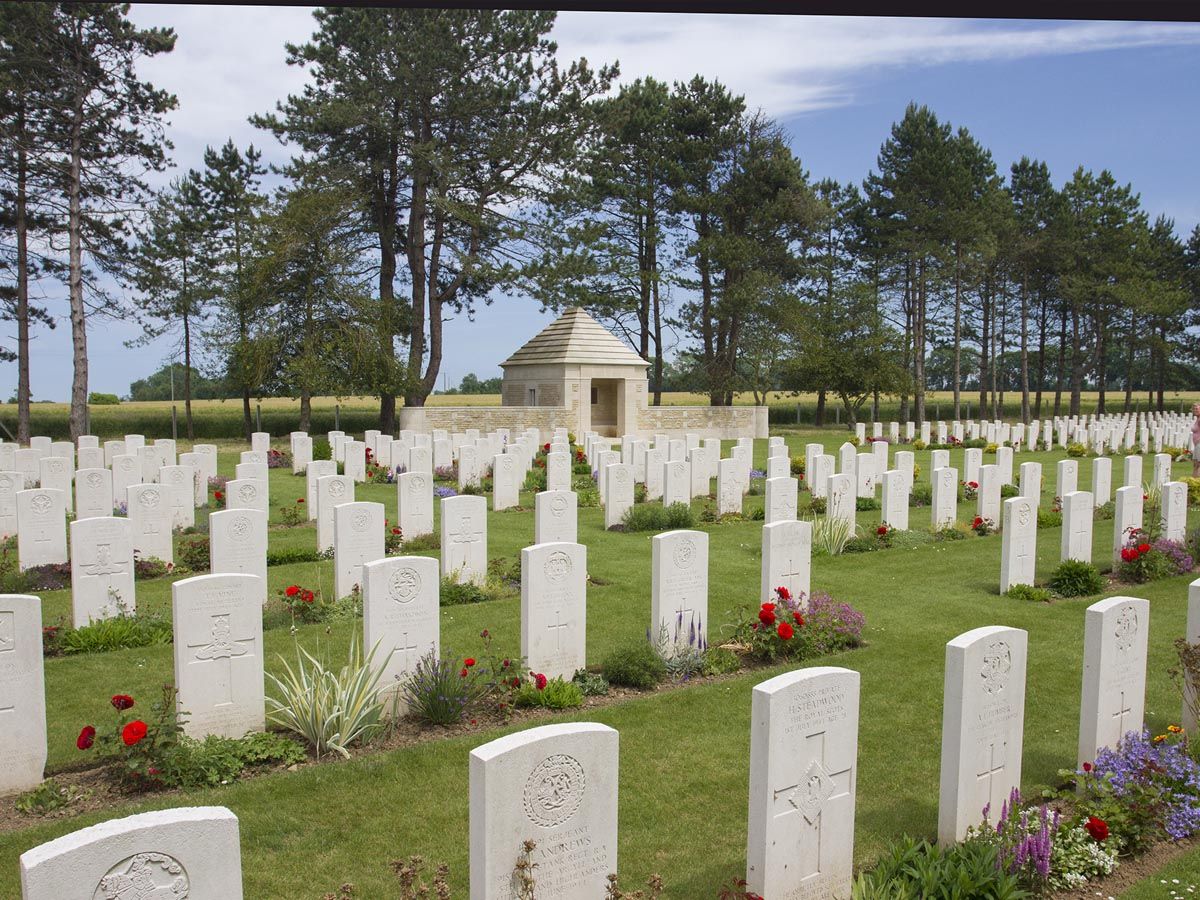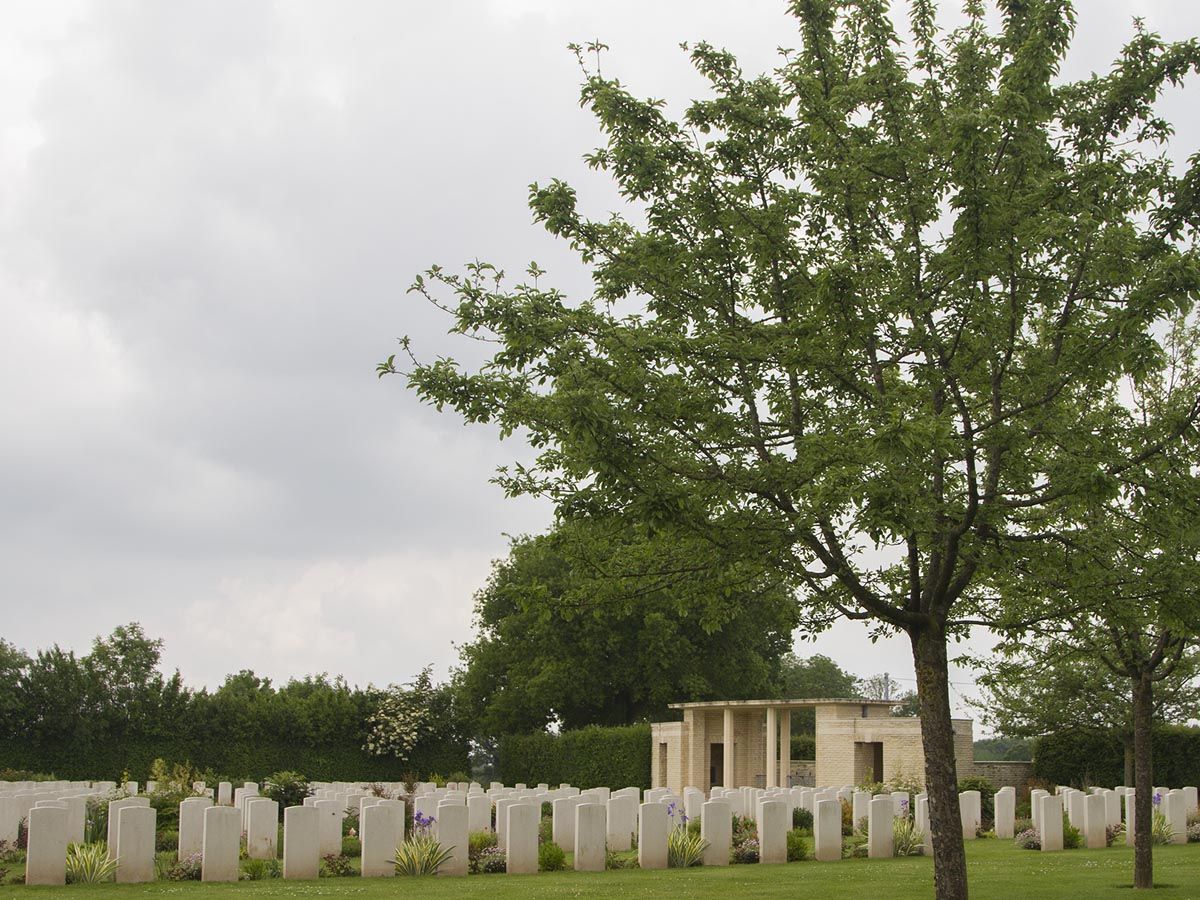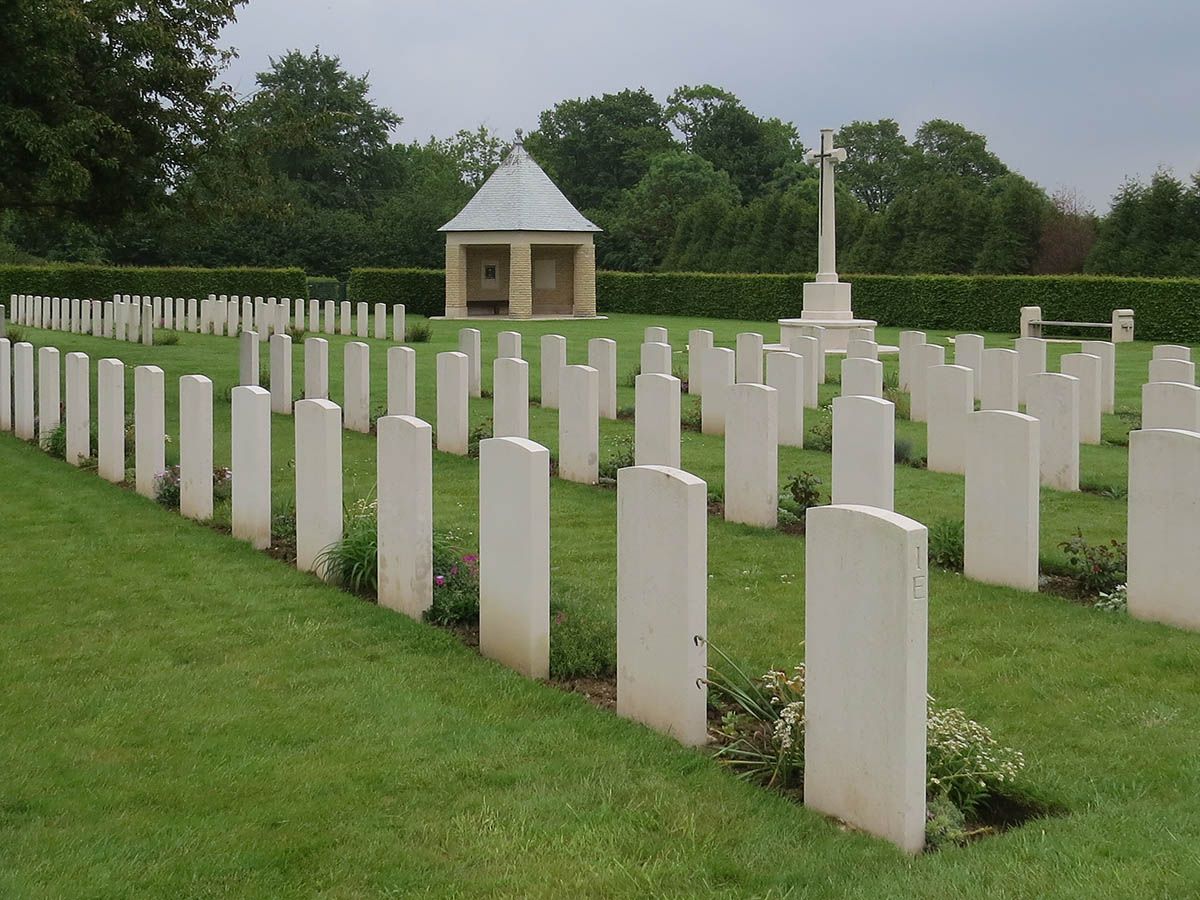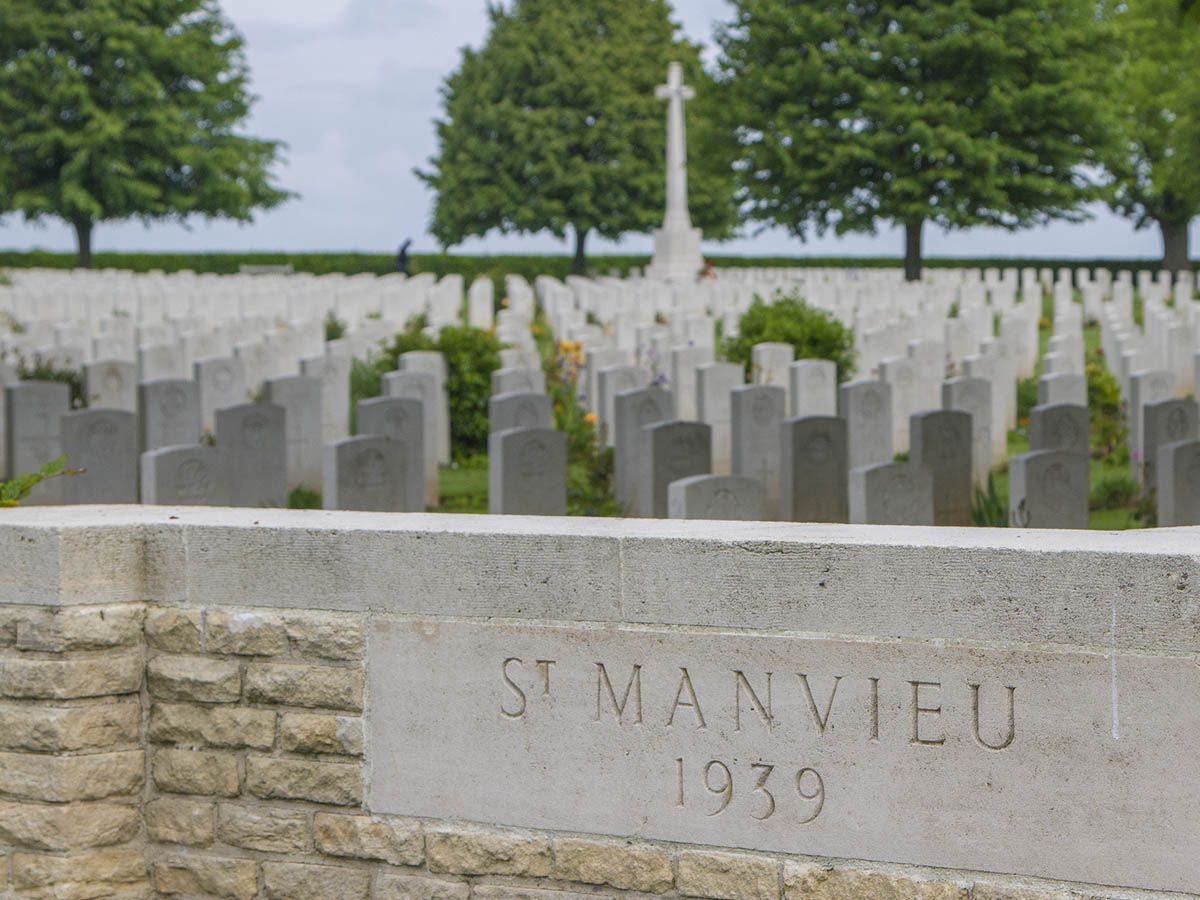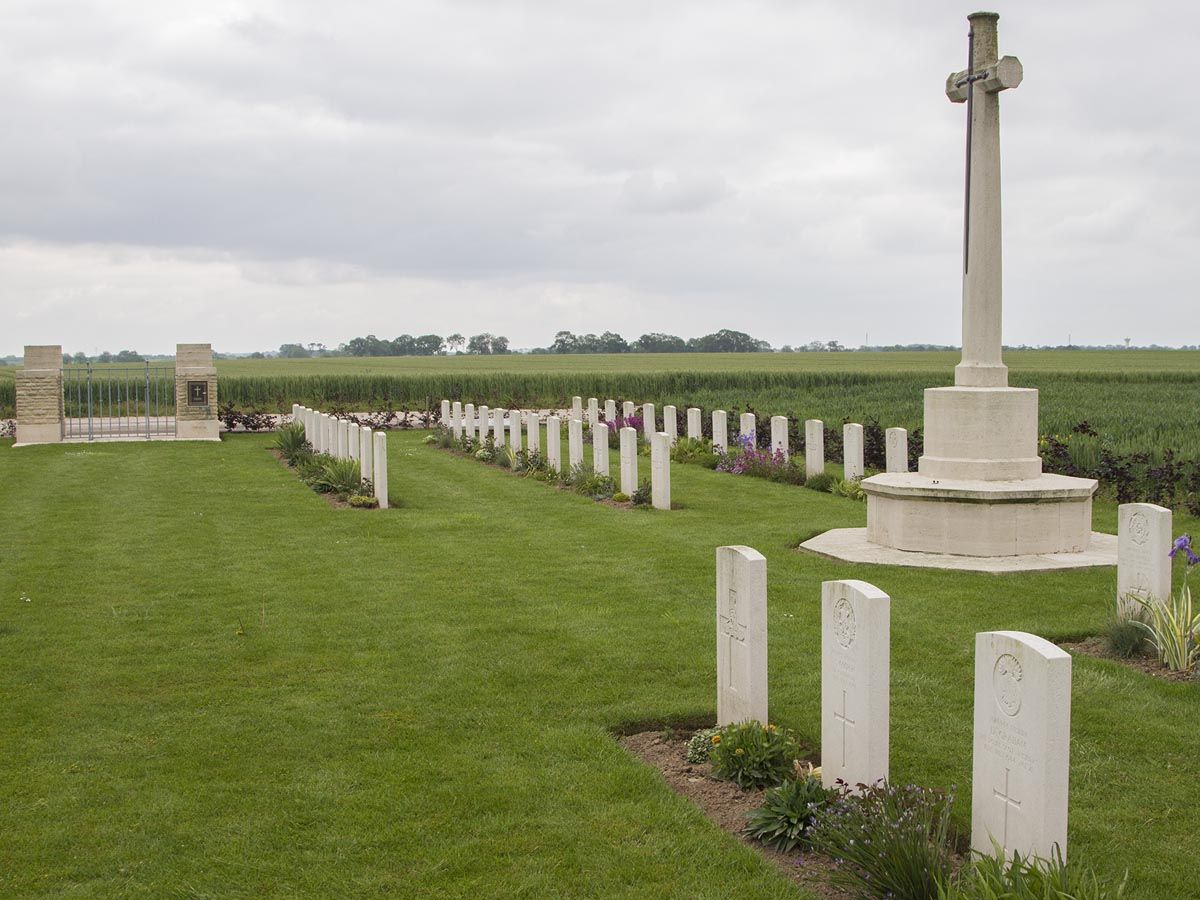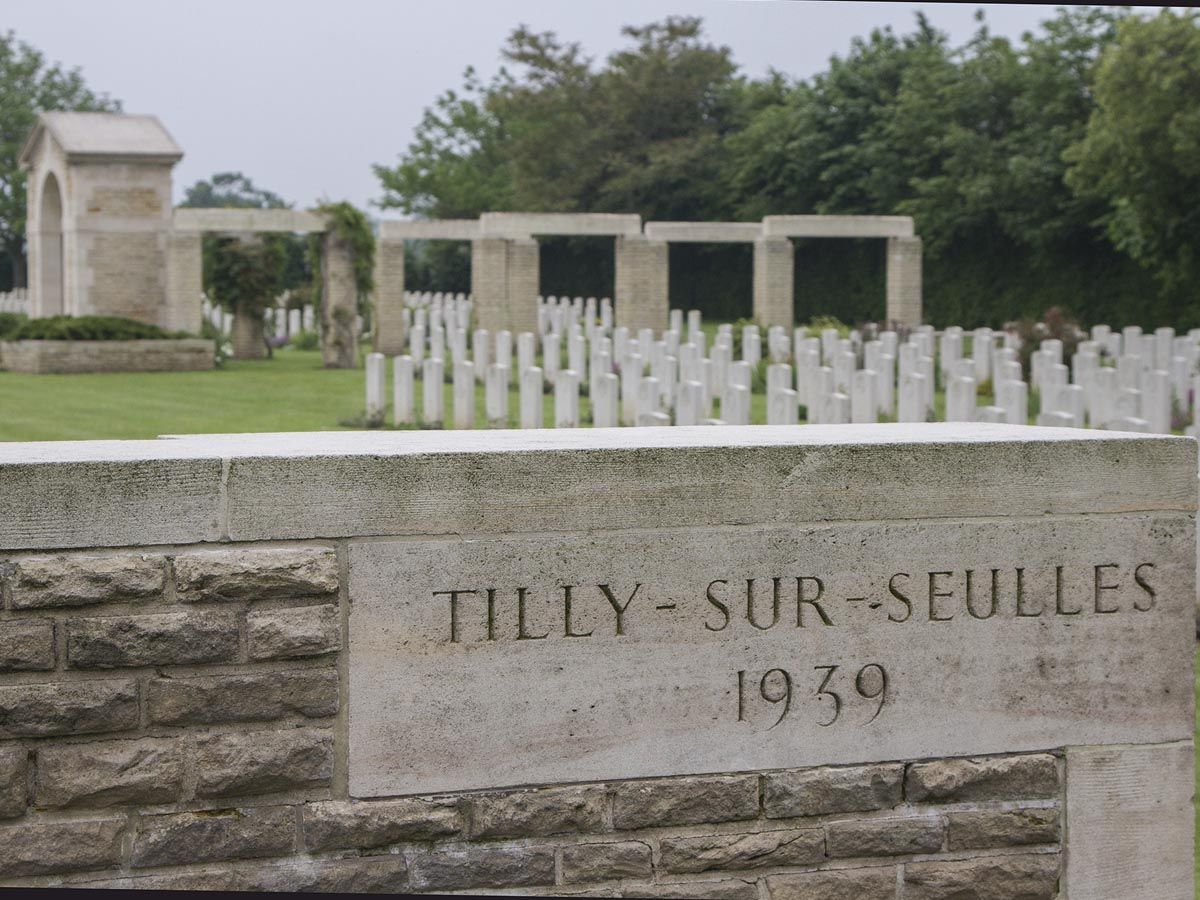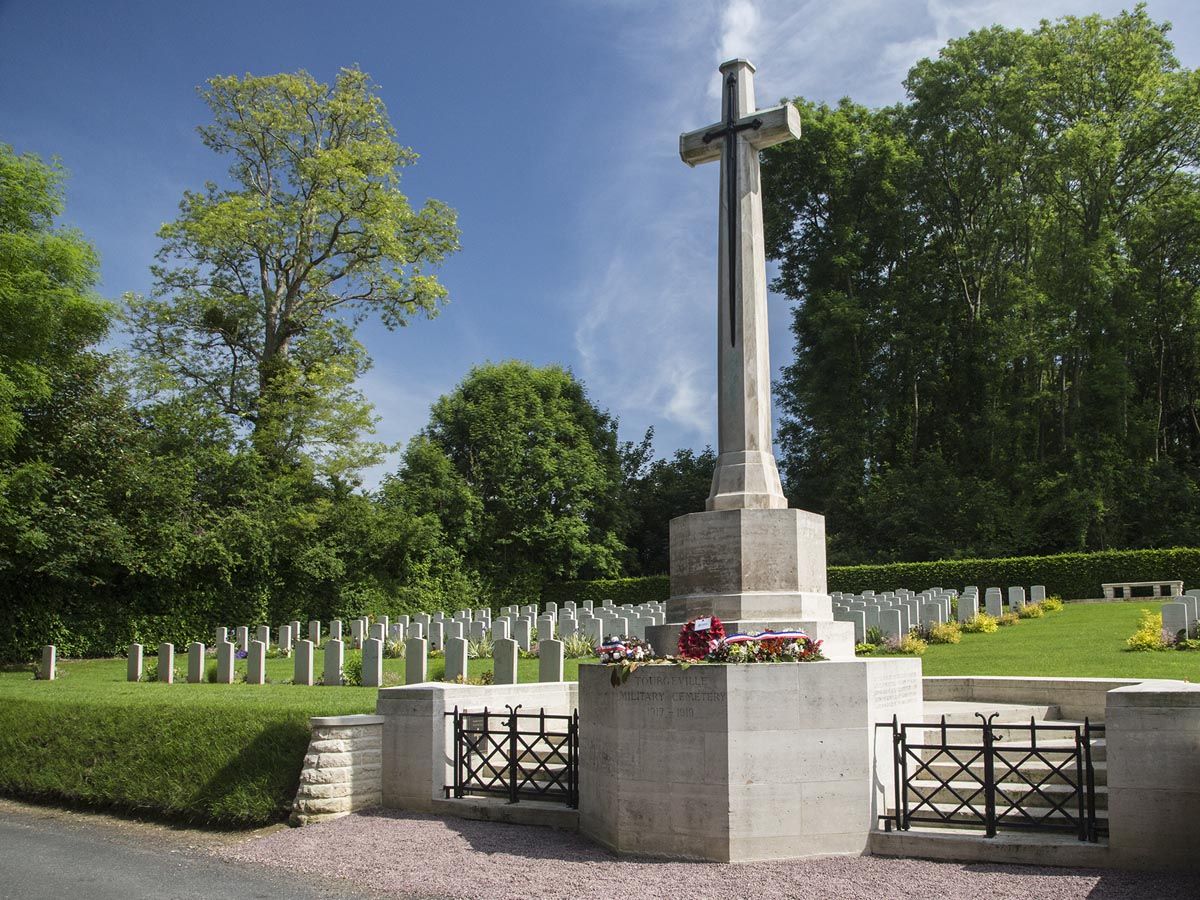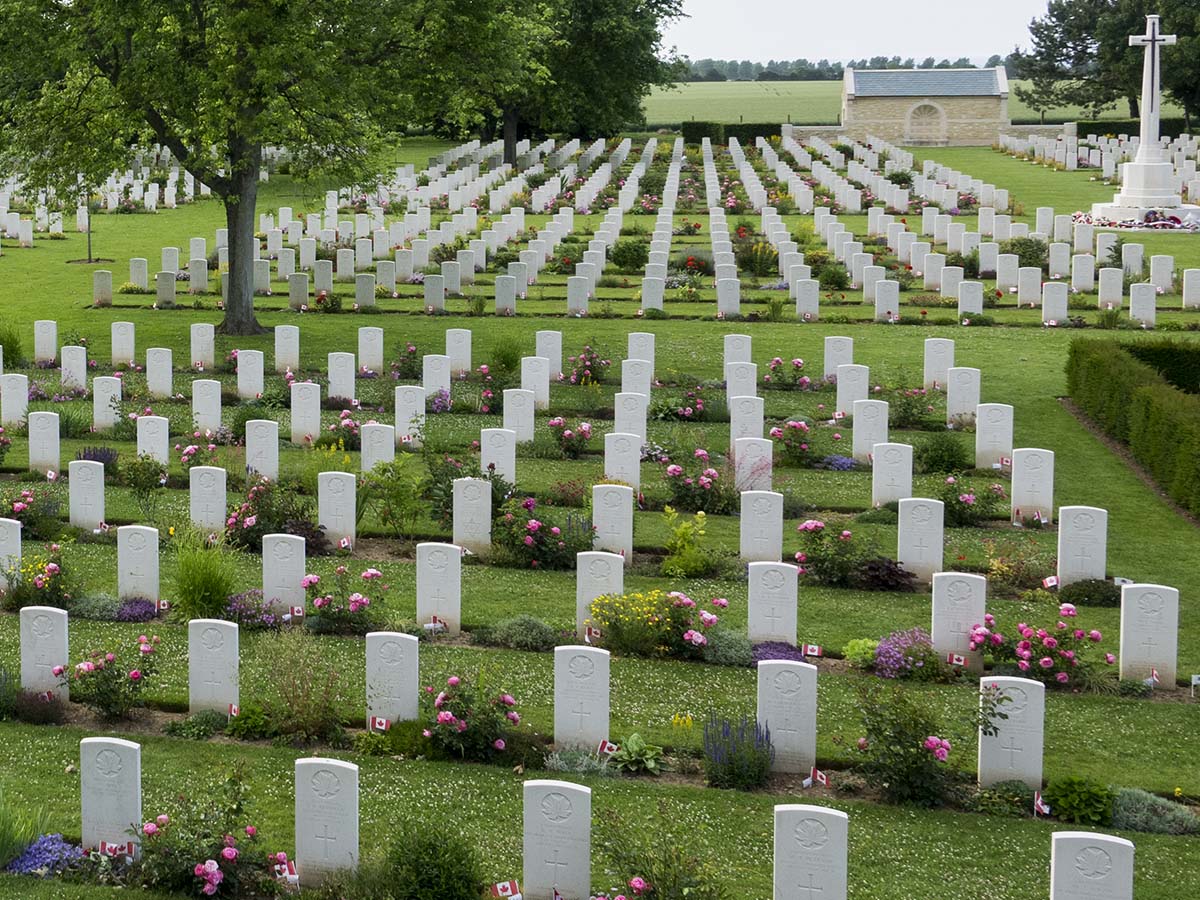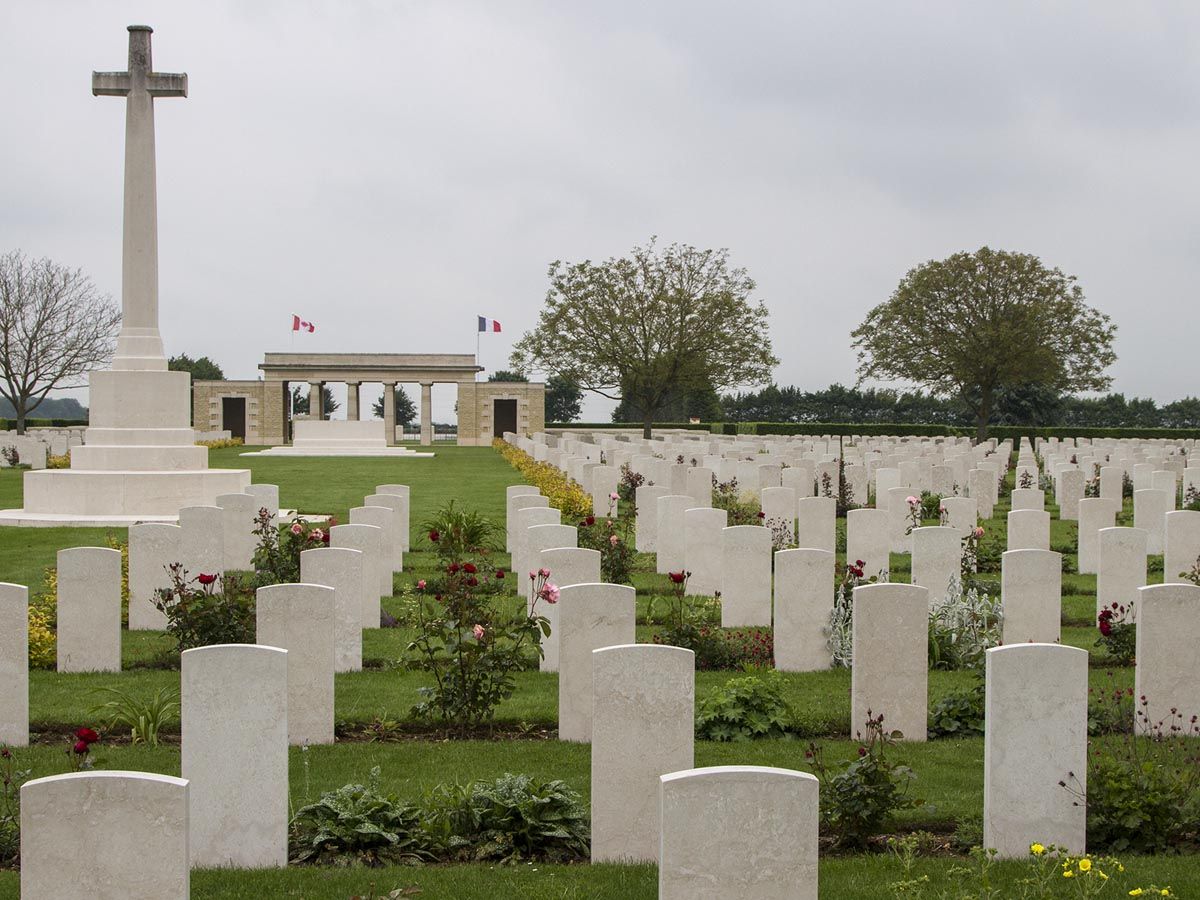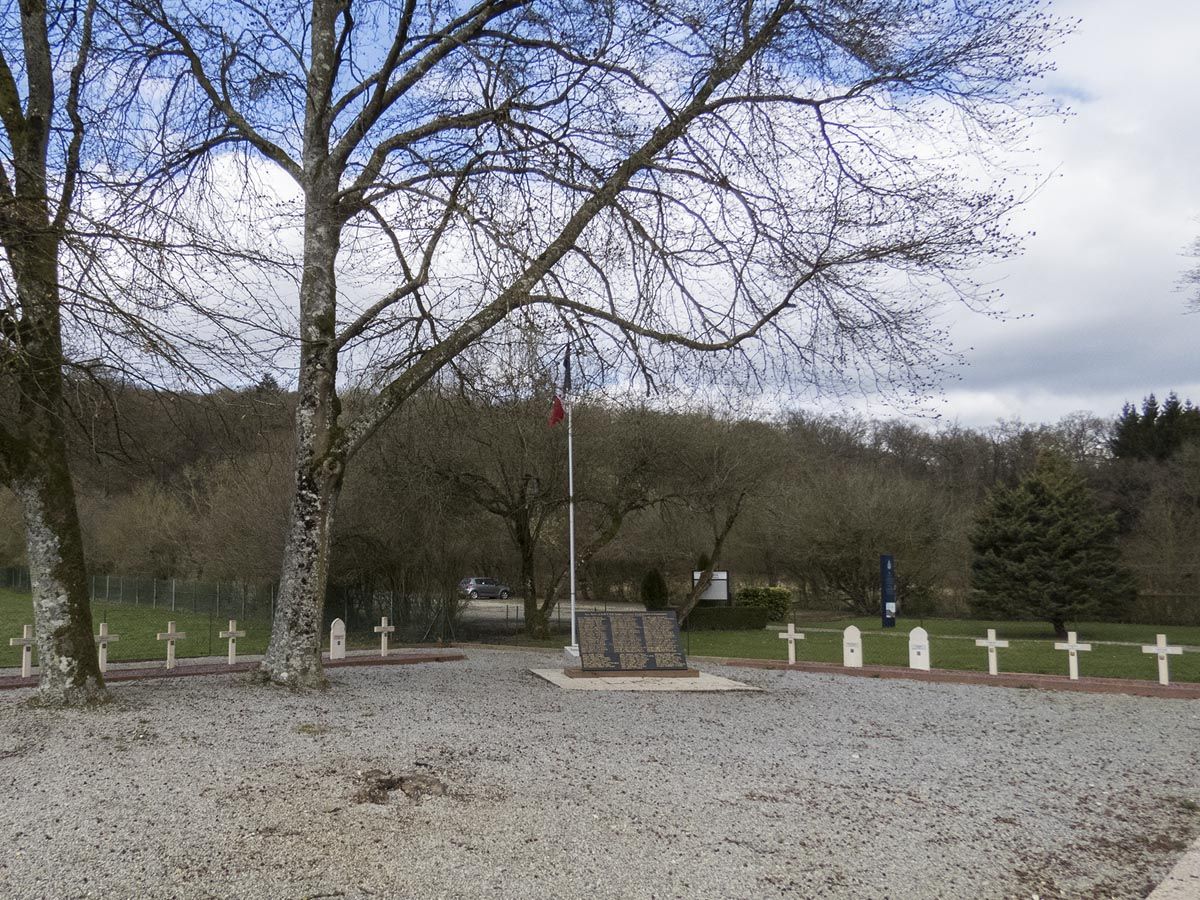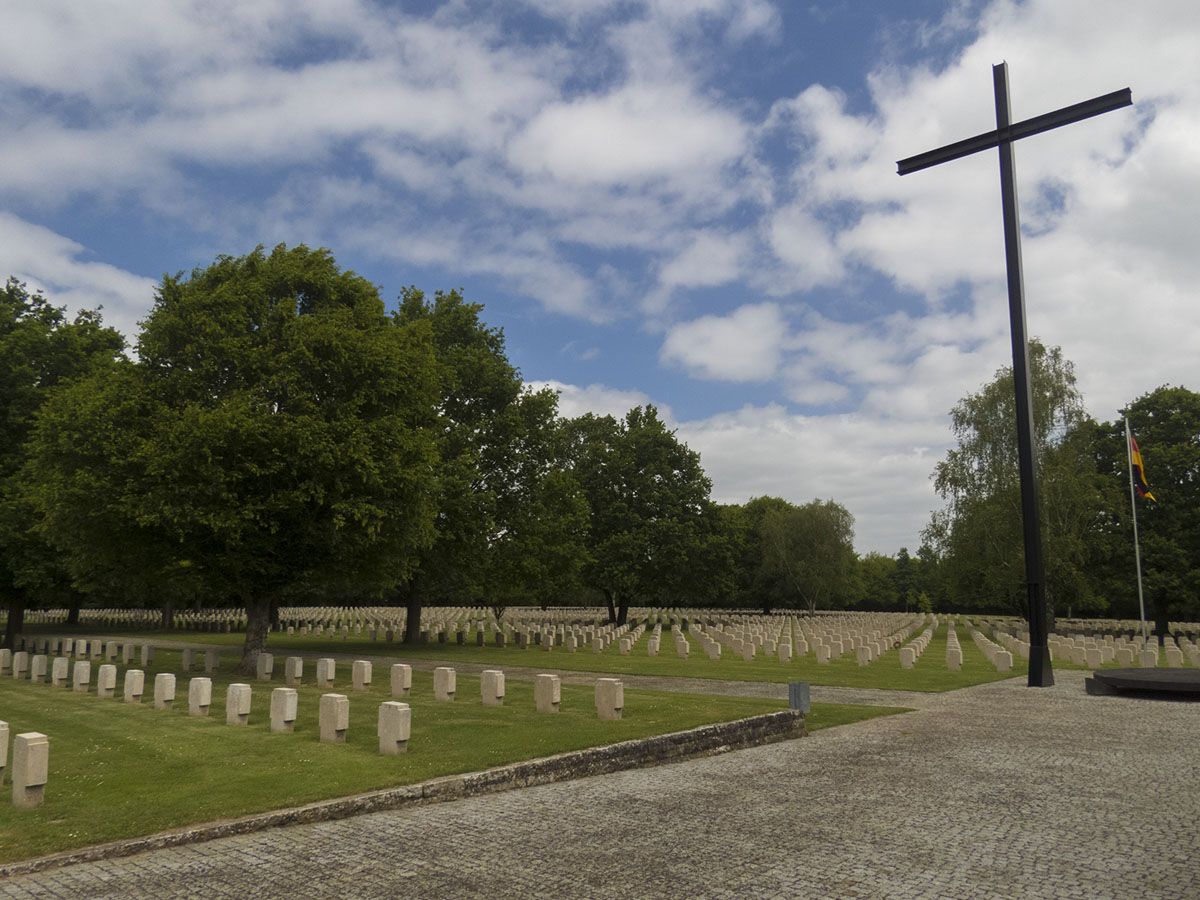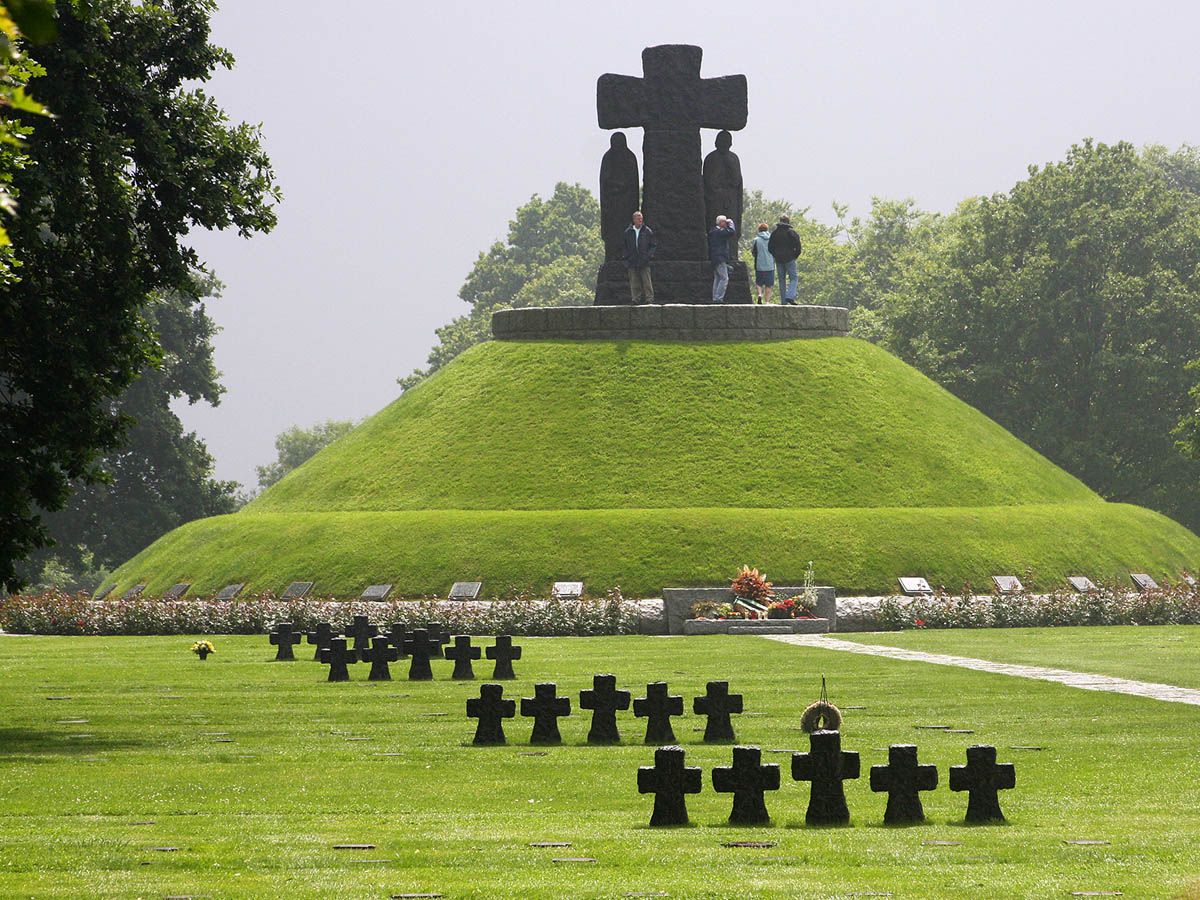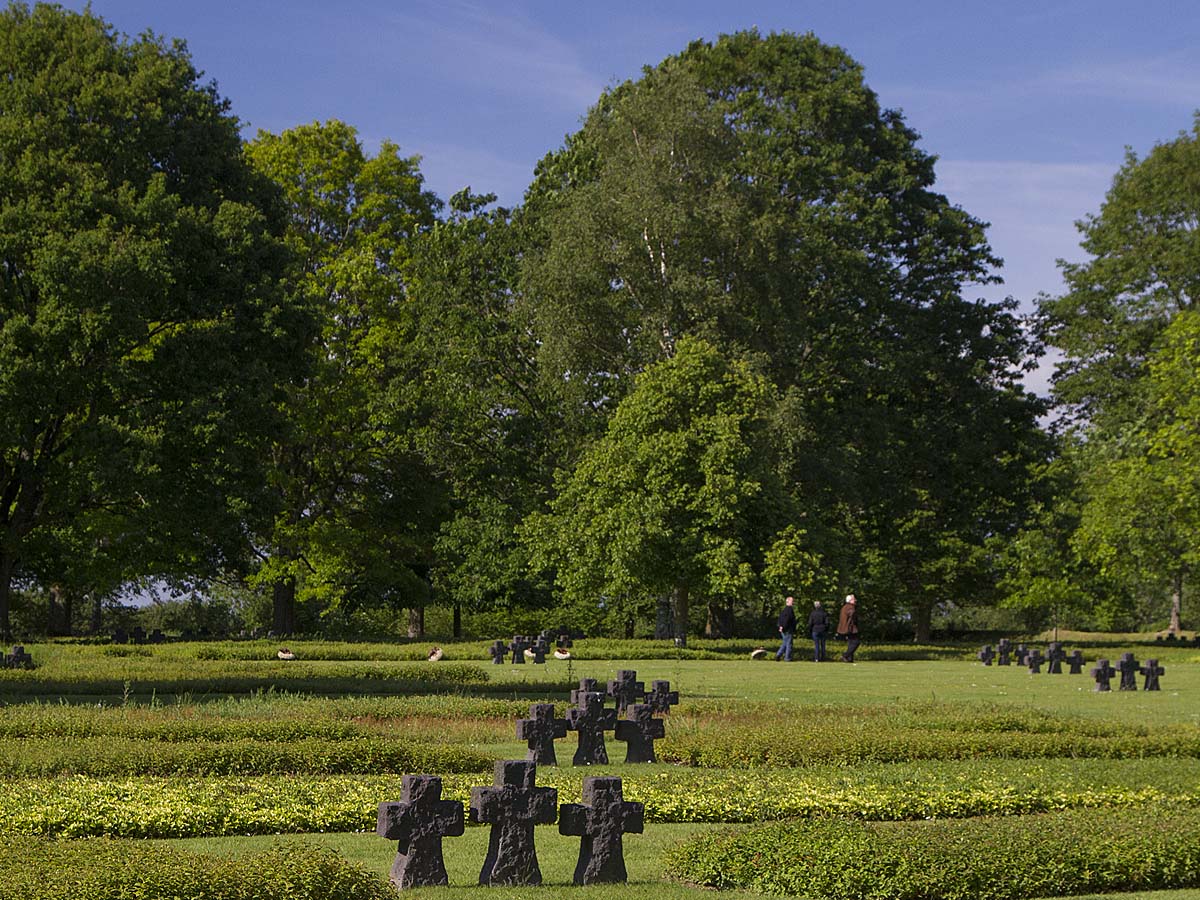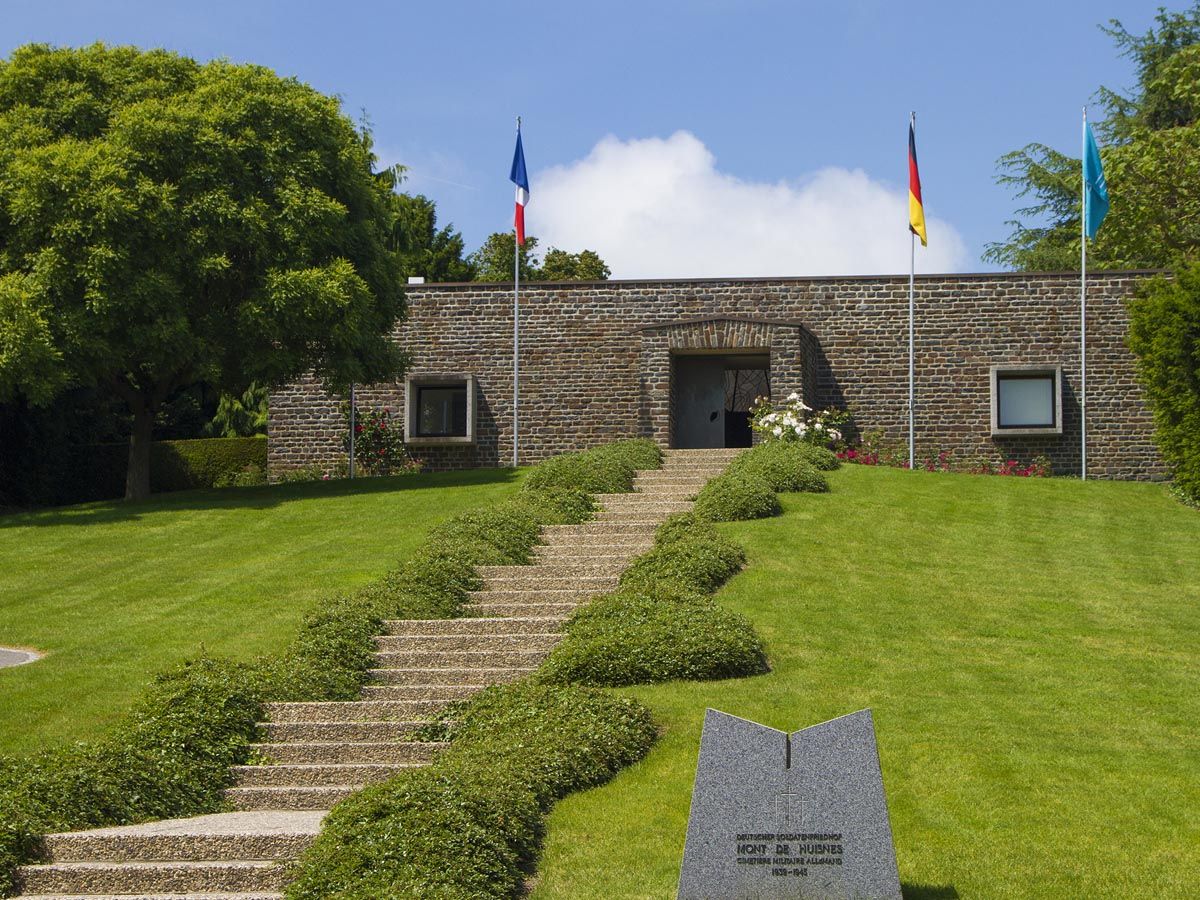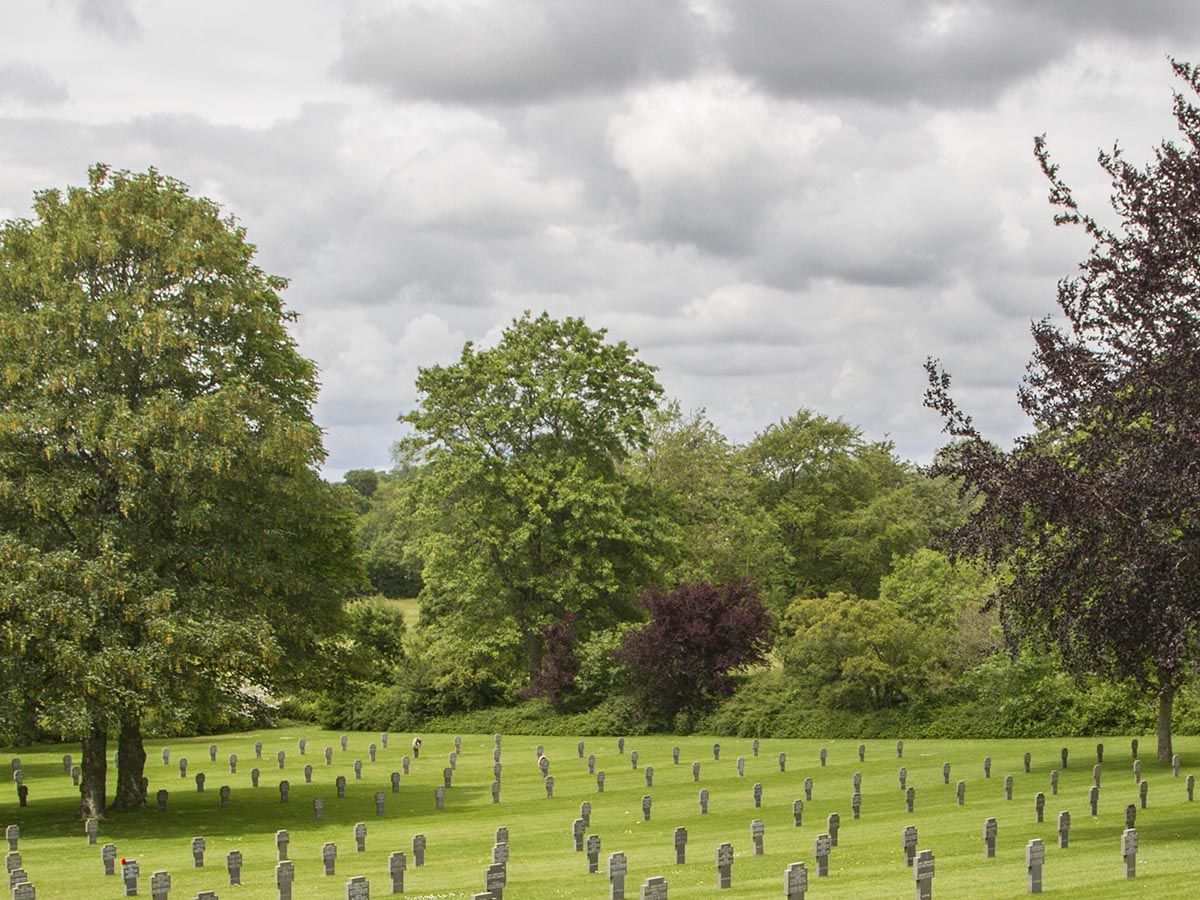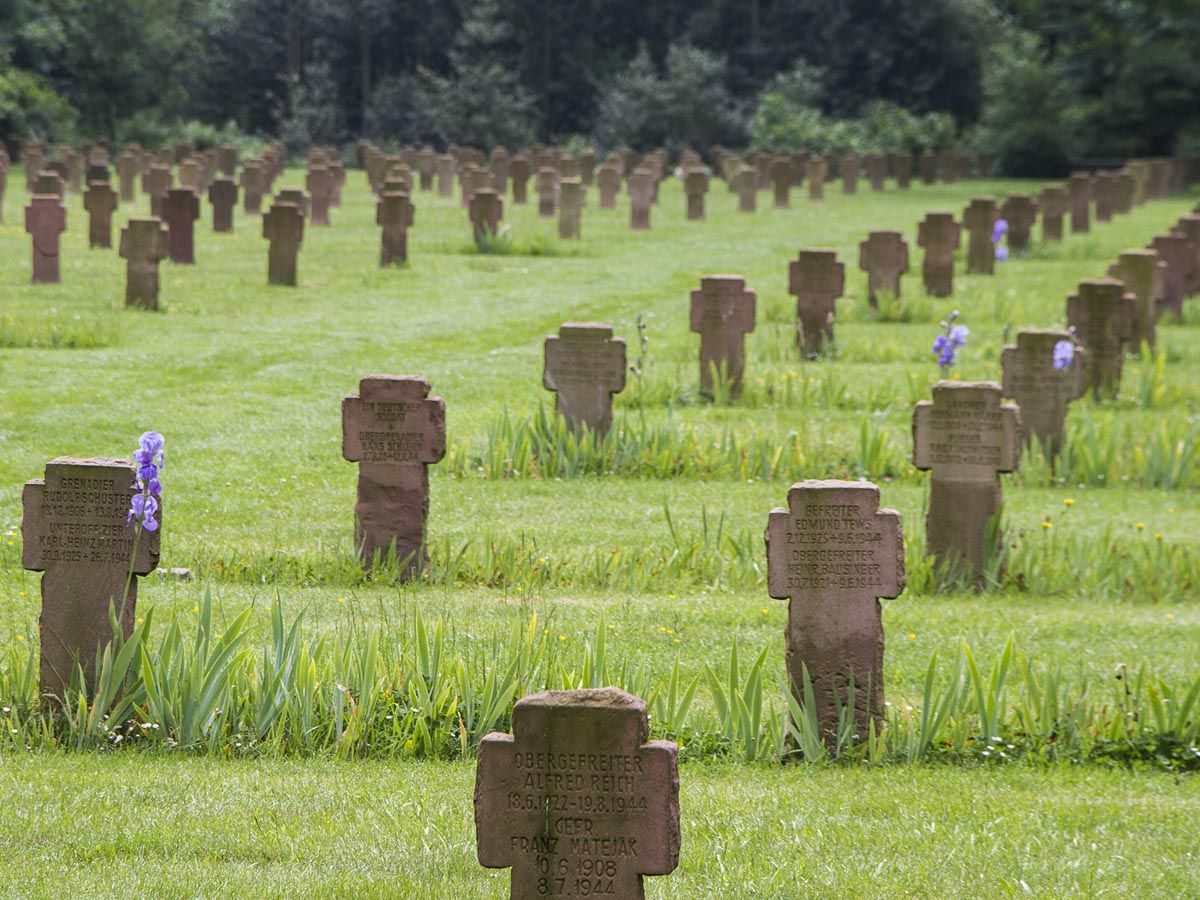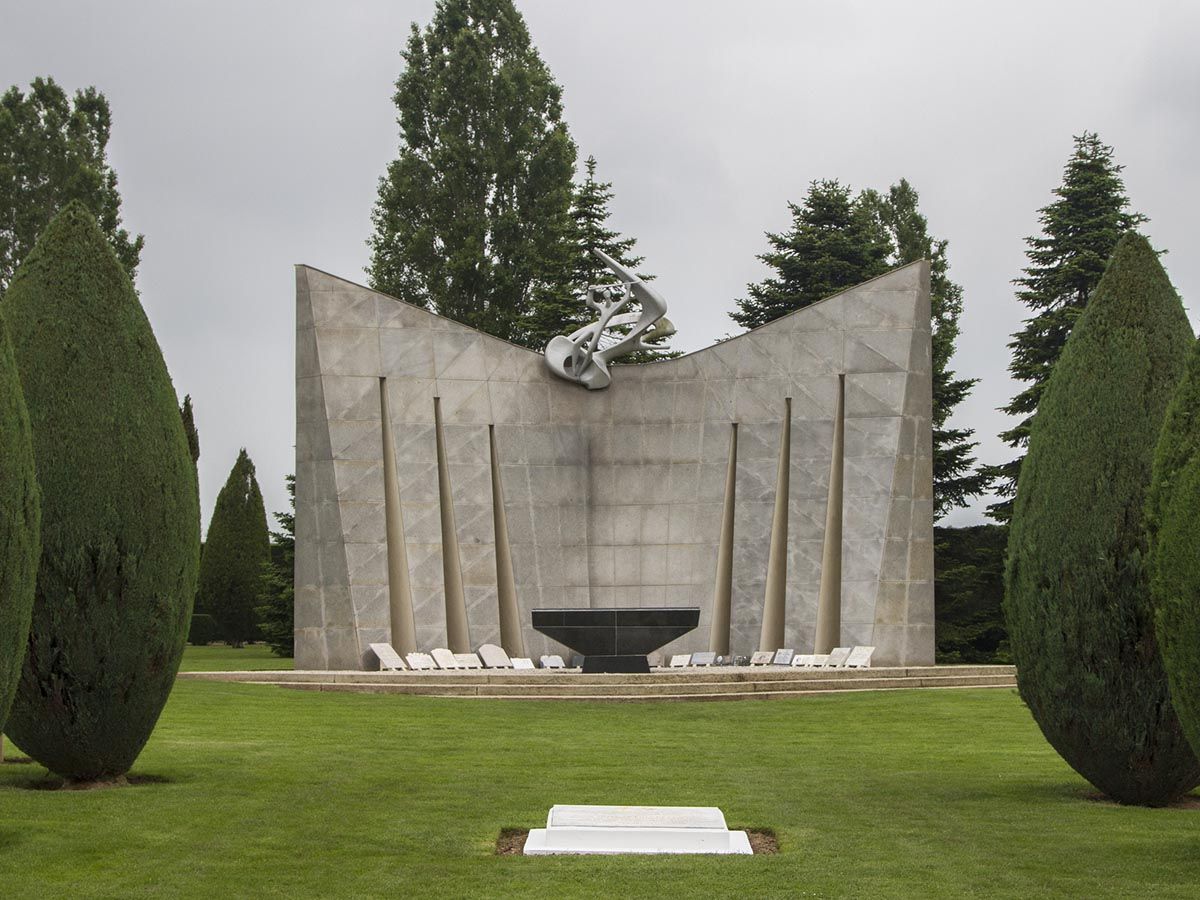Nestled just 14 kilometers southeast of Bayeux in Normandy, the Hottot-les-Bagues War Cemetery offers a powerful window into World War II history. This beautifully maintained Commonwealth War Graves Commission site contains 1,137 burials, with 1,005 Commonwealth soldiers and 132 German troops resting here. The cemetery’s thoughtful layout, with its gentle slope and carefully arranged floral displays, creates a peaceful yet moving tribute to those who fell during the Normandy Campaign of 1944.
You can easily reach this solemn place by taking the D6 road from Bayeux. As you wander among the orderly rows of headstones, you’ll feel the weight of history and sacrifice. The cemetery tells the story of fierce fighting that took place in this region as Allied forces pushed inland after D-Day.
When planning your visit to Normandy’s war sites, don’t overlook this less-crowded but equally significant memorial. Unlike some of the larger D-Day cemeteries, Hottot-les-Bagues offers a more intimate experience where you can reflect quietly on the human cost of war. The nearby village also provides a glimpse into the rural French countryside that these soldiers fought to liberate.
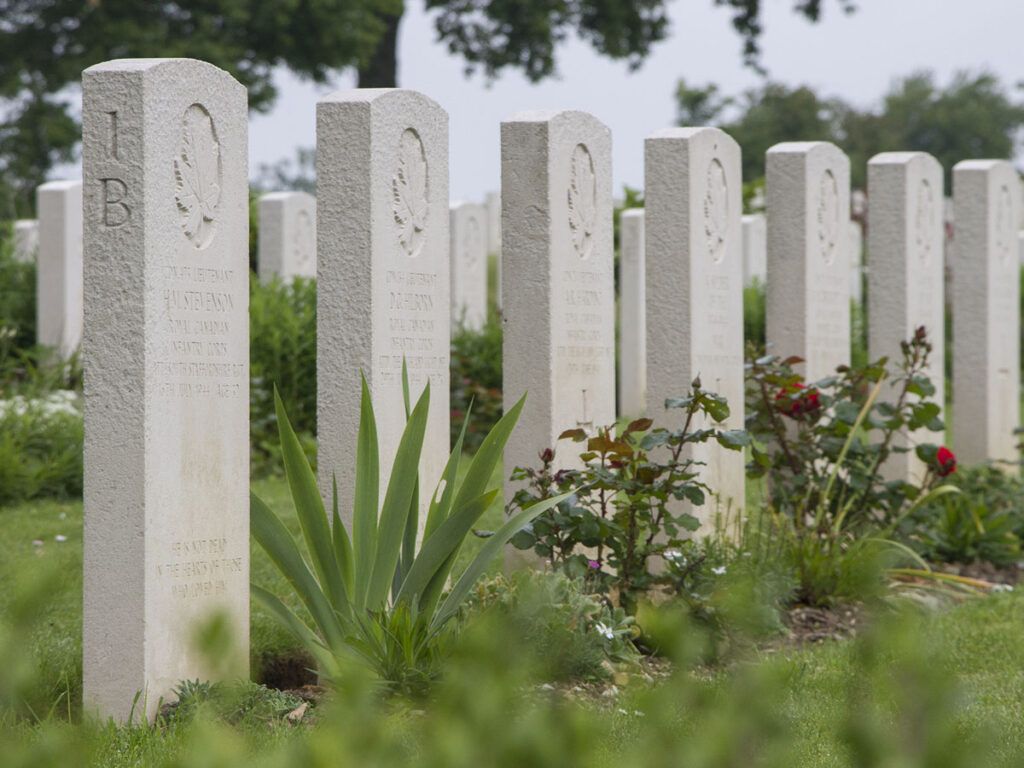
History of Hottot-les-Bagues War Cemetery
Hottot-les-Bagues War Cemetery stands as a solemn reminder of the fierce battles fought in Normandy following the D-Day landings. This final resting place contains 1,005 Commonwealth burials from the Second World War, including 56 unidentified soldiers, along with 132 German graves.
The Second World War Context
When you visit Hottot-les-Bagues, you’re walking on ground deeply connected to the pivotal Western Front campaign of 1944. The cemetery was established after heavy fighting in the area as Allied forces pushed inland from the Normandy beaches.
The war cemetery is located about 15 km southwest of Bayeux, an area that saw intense combat between Allied and German forces. Many soldiers buried here fell during the battles to capture the strategic Norman countryside.
The Commonwealth War Graves Commission carefully maintains this site as part of their mission to honor those who made the ultimate sacrifice. The cemetery’s peaceful setting today contrasts sharply with the violent conflict that once raged across these fields.
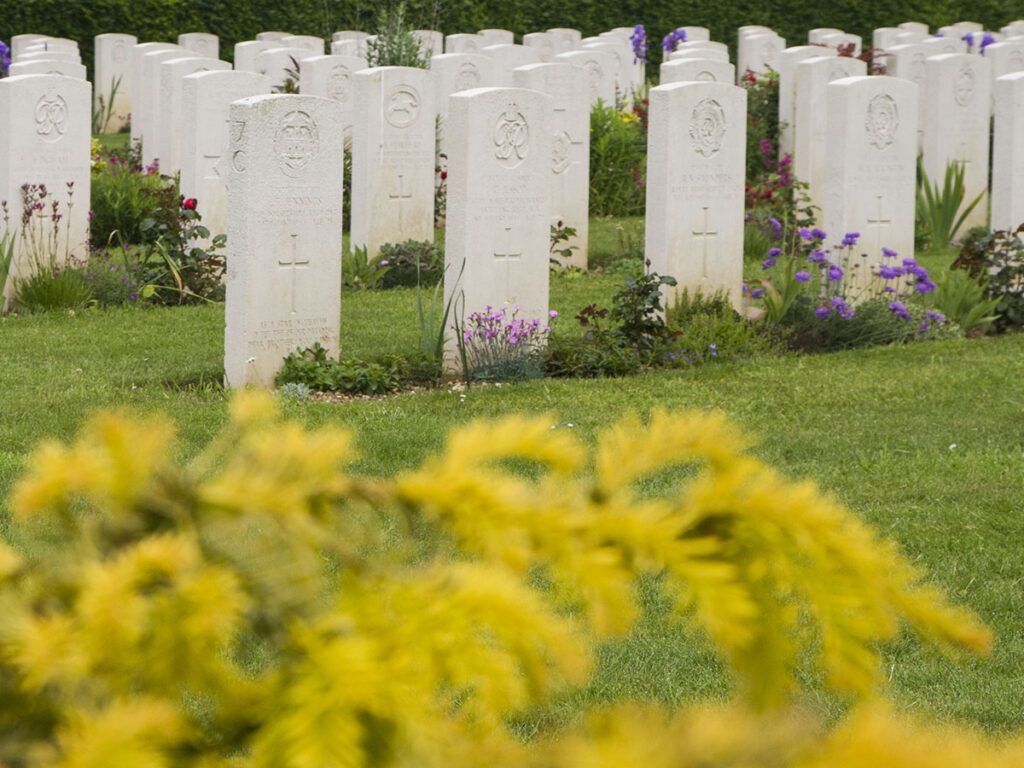
The Essex Regiment’s Involvement
The Essex Regiment played a significant role in the fighting around Hottot-les-Bagues. Their soldiers were part of the British forces tasked with pushing inland from the beaches and securing the Norman countryside.
Many Essex Regiment members rest in this cemetery, having fallen during fierce engagements with determined German defenders. Their objective was to help secure the vital road networks and strategic high ground in this region.
You’ll notice the Essex Regiment insignia on several headstones as you walk through the cemetery. These brave soldiers participated in the hard-fought battle for Hottot itself, which changed hands several times before being definitively liberated.
The Allied Offensive and the Normandy Landings
The Normandy landings on June 6, 1944 (D-Day) marked the beginning of the Allied offensive in northwestern Europe. After establishing beachheads, Allied forces began the difficult task of breaking out into the Normandy countryside.
Hottot-les-Bagues became a flashpoint in this campaign. The village was first captured by British troops on June 10, but German counterattacks reclaimed it. The area wasn’t finally secured until mid-July after intense fighting.
The casualties buried here represent various Commonwealth forces, including British, Canadian, and Australian troops. Many Royal Canadian Air Force personnel who supported the ground offensive also rest in this cemetery.
You’ll find the cemetery’s layout thoughtfully designed on a slight slope, giving it visual interest while honoring the fallen with dignity. The neatly arranged headstones and beautiful floral arrangements create a fitting memorial to those who gave their lives for freedom.
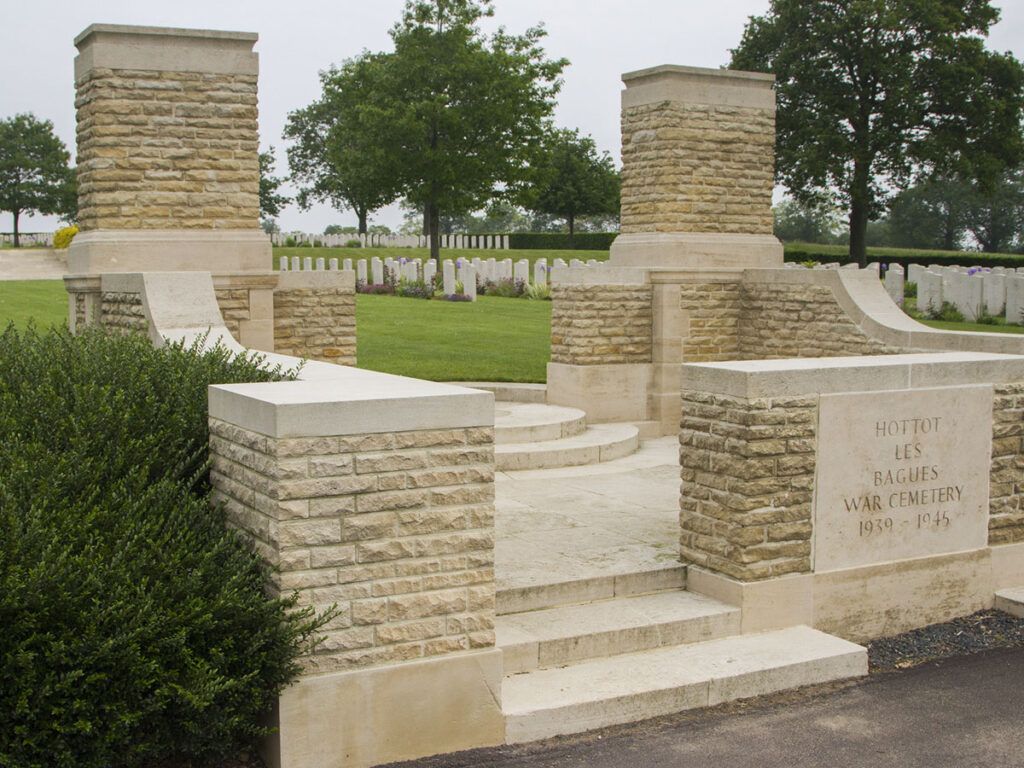
Visiting the Cemetery
Hottot-les-Bagues War Cemetery offers a profound and moving experience for visitors paying respects to fallen World War II soldiers. The cemetery is beautifully maintained with immaculate lawns and carefully tended graves, creating a peaceful atmosphere for reflection.
How to Reach the Cemetery
The cemetery is located in the Calvados region of Normandy, France. If you’re driving, you can easily access it via the N13 highway connecting Caen and Bayeux. From Bayeux, head south on D6 for about 13 kilometers until you reach Hottot-les-Bagues.
Public transportation options are limited, so renting a car is your best choice. Taxis from Bayeux are available but can be expensive.
GPS coordinates for the cemetery are approximately 49.1735° N, 0.6412° W. Most navigation systems will recognize “Hottot-les-Bagues War Cemetery” as a destination.
The roads leading to the cemetery are well-maintained, though they can be narrow in places. Look for the Commonwealth War Graves Commission signs which clearly mark the route.
Location and Accessibility
The cemetery sits in a tranquil rural setting just outside the village of Hottot-les-Bagues. The grounds are flat and wheelchair accessible, with paved pathways between grave sections.
Parking is available directly outside the cemetery entrance. The lot isn’t large but typically has enough space as visitor numbers are rarely overwhelming.
For visitors with mobility issues, the cemetery offers good accessibility with firm, level pathways throughout the grounds. The entrance has no steps, making it wheelchair-friendly.
The cemetery is open to visitors daily, with no entrance fee. As with all CWGC sites, it’s maintained with tremendous care and respect for the 1,137 servicemen buried here, including 1,005 Commonwealth soldiers and 132 German troops.
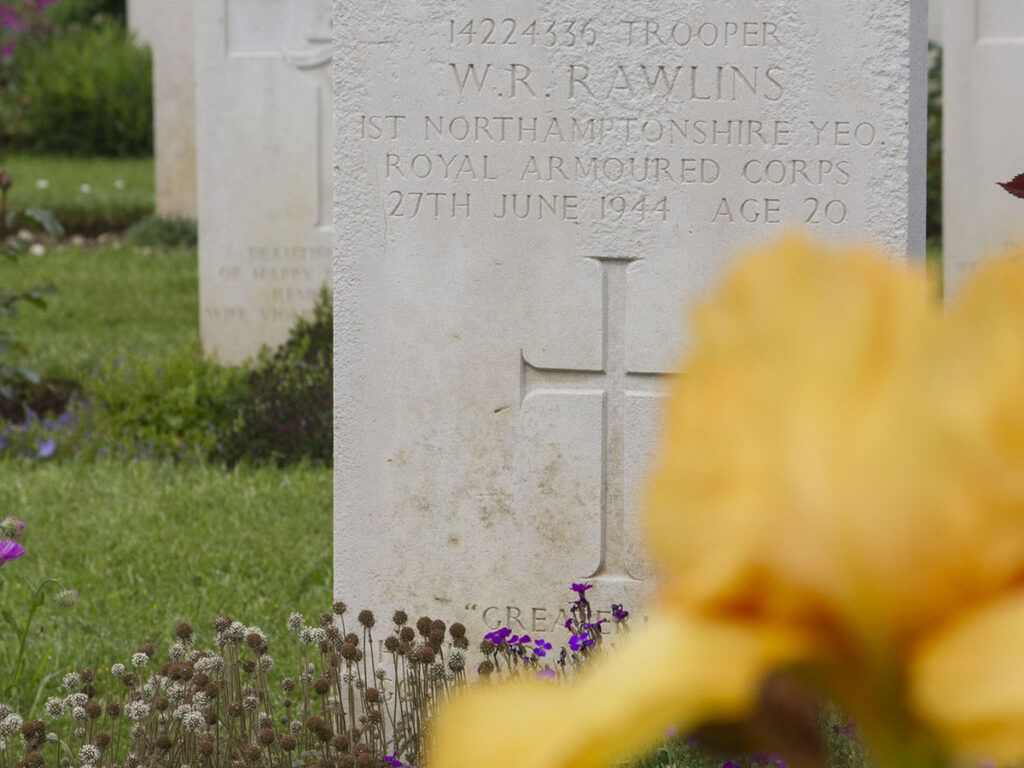
Best Times to Visit
The cemetery is accessible year-round, but the most pleasant visiting times are from April through October when weather conditions are favorable. Spring brings beautiful flowers to the grounds, while summer offers the longest daylight hours.
Early mornings provide the most peaceful experience, with fewer visitors and beautiful light for photography. If you’re planning to visit on D-Day anniversary dates (early June), expect more visitors.
Weather in Normandy can be unpredictable, so bring an umbrella regardless of season. Winter visits can be moving and contemplative, but prepare for cold, potentially wet conditions.
The cemetery looks particularly poignant in late afternoon when the setting sun casts a golden light across the headstones. Allow yourself at least 30-45 minutes to properly experience the site.
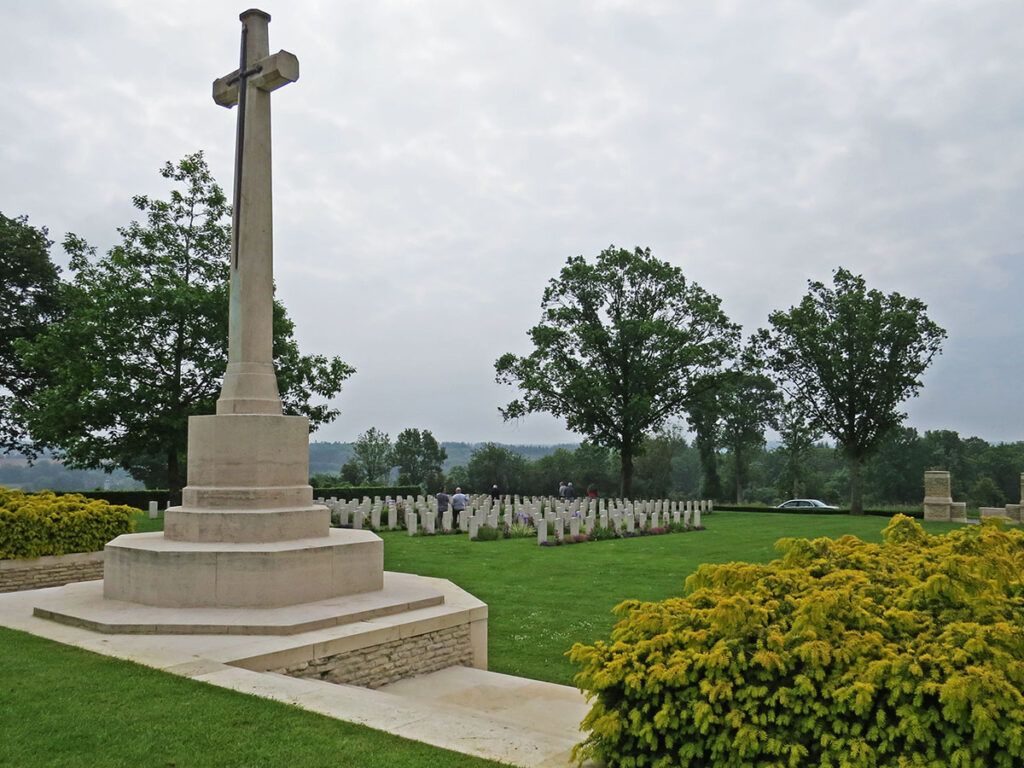
Nearby Accommodations
Bayeux, located about 13km north of the cemetery, offers the most convenient lodging options. This charming town provides everything from budget-friendly B&Bs to luxury hotels. Try the Hotel Churchill or the more affordable Hotel Villa Lara.
Recommended hotels:
Closer to the cemetery, the village of Tilly-sur-Seulles (5km away) has a few small inns and guest houses with a local feel. Le Moulin de la Galette offers comfortable rooms with countryside views.
For a fuller range of accommodations, consider Caen, about 25km east of Hottot-les-Bagues. This larger city provides numerous hotels, restaurants, and amenities.
Booking accommodation in advance is highly recommended, especially if you’re visiting during summer months or around D-Day anniversary events when rooms fill quickly.
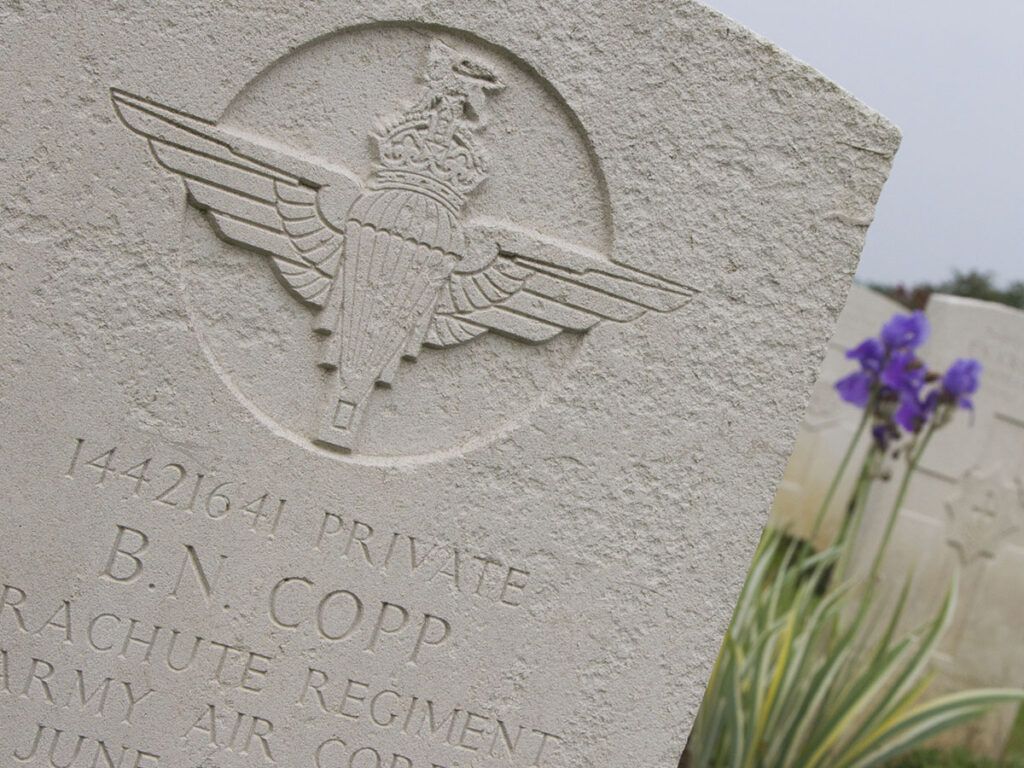
Guided Tours and Information Services
While the cemetery doesn’t offer regular guided tours, you can arrange private tours through Bayeux tourist offices. These knowledgeable guides provide detailed context about the Battle of Normandy and the specific actions that led to casualties buried here.
The Commonwealth War Graves Commission provides excellent informational materials at the site. Look for the visitor information panel near the entrance that explains the cemetery’s history and significance.
For a deeper understanding, download the CWGC’s War Graves app before your visit. It provides searchable records and historical context.
Several Normandy tour companies offer comprehensive D-Day tours that include stops at Hottot-les-Bagues among other significant sites. Bayeux Shuttle and Overlord Tours are reliable operators with knowledgeable guides.
Recommended D-Day Tours from Paris:
- From Paris: Normandy D-Day Beaches Day Trip
- From Paris: 2-Day Normandy & Brittany Tour
- Normandy American D-Day Experience (From Bayeux Station)
Recommended D-Day Tours from Bayeux:
- From Bayeux: American D-Day Sites in Normandy Full-Day Tour
- From Bayeux: American D-Day Sites in Normandy Half-Day Tour
- From Bayeux: Half-Day Normandy WWII Sidecar Tour
- Full-Day US Battlefields of Normandy Tour from Bayeux
Recommended Private D-Day Tours:
- From Paris: Normandy D-Day Landing Beaches Full-Day Tour
- From Rouen: Normandy D-Day Beaches Private Full-Day Tour
- Private Tour: Rouen, Bayeux, and Falaise Day Trip from Bayeux
- Normandy WWII Private Half-day Sidecar Tour From Bayeux
Recommended Band of Brothers Tours:
Facilities and Regulations
The cemetery maintains a visitors’ book where you can share your thoughts and reflections. There are no public restrooms on site, so plan accordingly.
Photography is permitted, but visitors are asked to maintain a respectful atmosphere. Remember this is a place of remembrance, so quiet contemplation is appreciated by all visitors.
No commercial or organized activities are allowed without prior permission from the Commonwealth War Graves Commission.
The cemetery does not have a gift shop or cafe facilities. The nearby village of Hottot-les-Bagues has limited services, so bringing water and snacks is advisable.
Visitors are welcome to leave small tributes or flowers by headstones, but please refrain from leaving non-biodegradable items. The CWGC staff work diligently to keep the grounds pristine as a fitting tribute to those who rest there.

The Cemetery Grounds
Hottot-les-Bagues War Cemetery offers visitors a peaceful and thoughtful space for remembrance. The grounds are beautifully maintained by the Commonwealth War Graves Commission (CWGC) and create a dignified resting place for those who fell during the Battle of Normandy.
Layout and Design of the Cemetery
As you enter the cemetery, you’ll notice its gentle slope that adds character to the grounds. This subtle gradient creates an interesting visual perspective as you walk among the headstones. The CWGC has arranged the 1,137 graves in neat, orderly rows that stretch across the well-manicured lawns.
The cemetery contains 1,005 Commonwealth burials and 132 German graves. This mix reflects the reality of the battles fought in this area during the summer of 1944.
Flower beds and carefully trimmed hedges frame the cemetery, adding splashes of color throughout the seasons. The consistent Portland stone markers create a unified and solemn appearance, standing in stark contrast to the lush greenery surrounding them.
Memorials and Commemorations
At the center of the cemetery stands the Cross of Sacrifice, a standard feature in Commonwealth war cemeteries designed by architect Sir Reginald Blomfield. This imposing stone cross with a bronze sword adorning its face serves as a focal point for reflection.
The Stone of Remembrance, another key memorial element, bears the inscription “Their Name Liveth For Evermore.” This phrase, chosen by Rudyard Kipling, offers a powerful message of eternal remembrance.
Each headstone contains personal information about the fallen, including name, rank, regiment, date of death, and age. Many families also added personal inscriptions. These touching messages provide a human connection to the historical events.
You’ll find a visitor information panel that explains the historical context of the cemetery and the actions that took place in the area during the Normandy campaign.
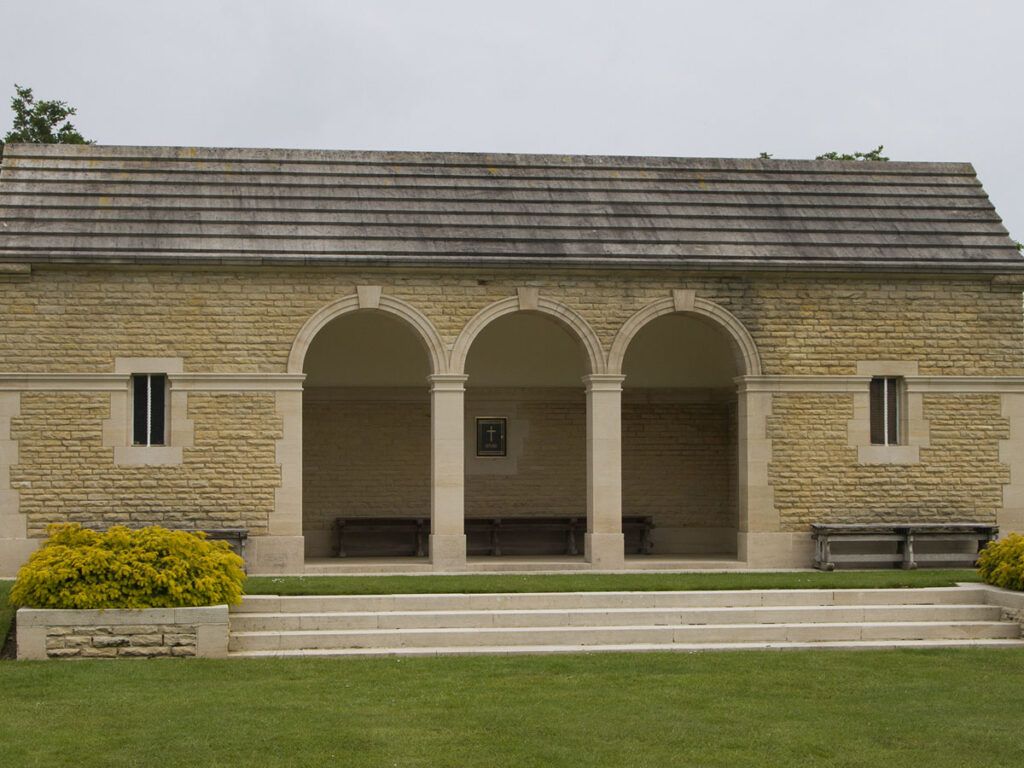
The Fallen Soldiers
Hottot-les-Bagues War Cemetery serves as the final resting place for over 1,000 casualties from the Second World War. Most soldiers buried here lost their lives during the intense fighting that followed the D-Day landings in June and July 1944.
Commonwealth Burials
The cemetery predominantly holds Commonwealth war dead, with the majority being soldiers from the United Kingdom. As you walk among the uniform white headstones, you’ll notice they belong to men who fought in various British divisions during the Normandy campaign.
Many fell during operations to capture Caen and push southward following the Allied landings. The 49th (West Riding) and 50th (Northumbrian) Divisions are well-represented here, having suffered heavy losses in the area.
Some Canadian soldiers also rest here, though fewer in number than in other Normandy cemeteries. Each grave is meticulously maintained by the Commonwealth War Graves Commission, creating a peaceful and dignified memorial.
German Graves
Unlike some other Normandy cemeteries, Hottot-les-Bagues contains a section dedicated to German soldiers who died in the same campaign. These graves are marked differently from their Commonwealth counterparts.
The German section provides a sobering reminder that young men from both sides of the conflict lost their lives in these fields. Military historians often note how the proximity of opposing forces’ graves emphasizes the shared human cost of war.
When visiting this section, you’ll notice a more subdued atmosphere. The German graves help complete the historical picture of the brutal fighting that occurred around Hottot-les-Bagues in the summer of 1944.
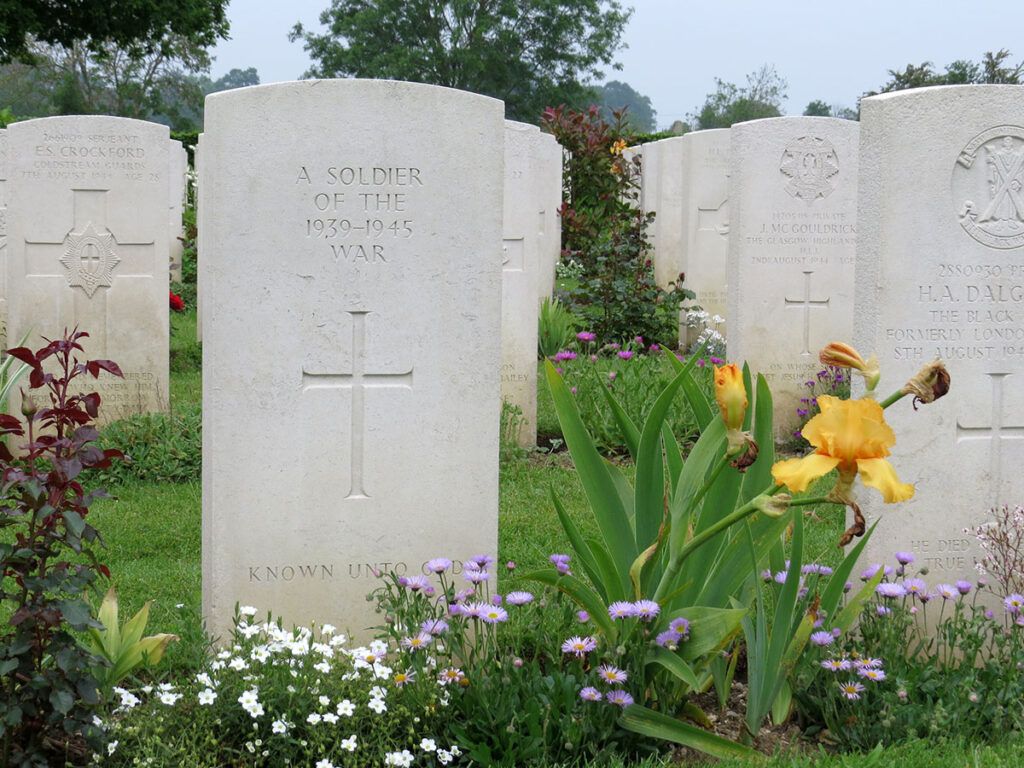
Identified vs. Unidentified Casualties
Most graves at Hottot-les-Bagues belong to identified soldiers, with their names, ranks, units, and dates of death carefully recorded on their headstones. Family members added personal inscriptions to many of these markers, offering touching glimpses into the lives behind the names.
Sadly, not all fallen soldiers could be identified. Some headstones bear only the simple inscription “A Soldier of the 1939-1945 War” along with “Known Unto God.” These unknown soldiers represent those whose remains couldn’t be matched to military records.
You’ll find the ratio of identified to unidentified remains is better here than in World War I cemeteries, reflecting improved record-keeping and identification methods. Each grave, whether named or unnamed, receives the same care and respect.
Nearby Attractions
Hottot-les-Bagues War Cemetery is surrounded by significant historical sites that tell the story of the Normandy Landings and World War II. The area offers a rich tapestry of museums and cultural experiences within a short drive.
The Longues-sur-Mer battery is just a short drive away and offers a fascinating glimpse into German coastal defenses. You’ll find four massive artillery guns still in their original concrete casemates overlooking the Channel.
The Normandy American Cemetery at Colleville-sur-Mer is about 30 minutes away. This solemn site contains the graves of nearly 10,000 American soldiers who gave their lives during the D-Day operations and subsequent battles.
Château Guillaume-le-Conquérant (William the Conqueror’s Castle) in Falaise is worth your time. This medieval fortress has connections to the famous Norman who conquered England in 1066.
Mont Saint-Michel, though farther away, makes for an unforgettable day trip. This iconic island abbey rises dramatically from the bay and has centuries of history to explore.
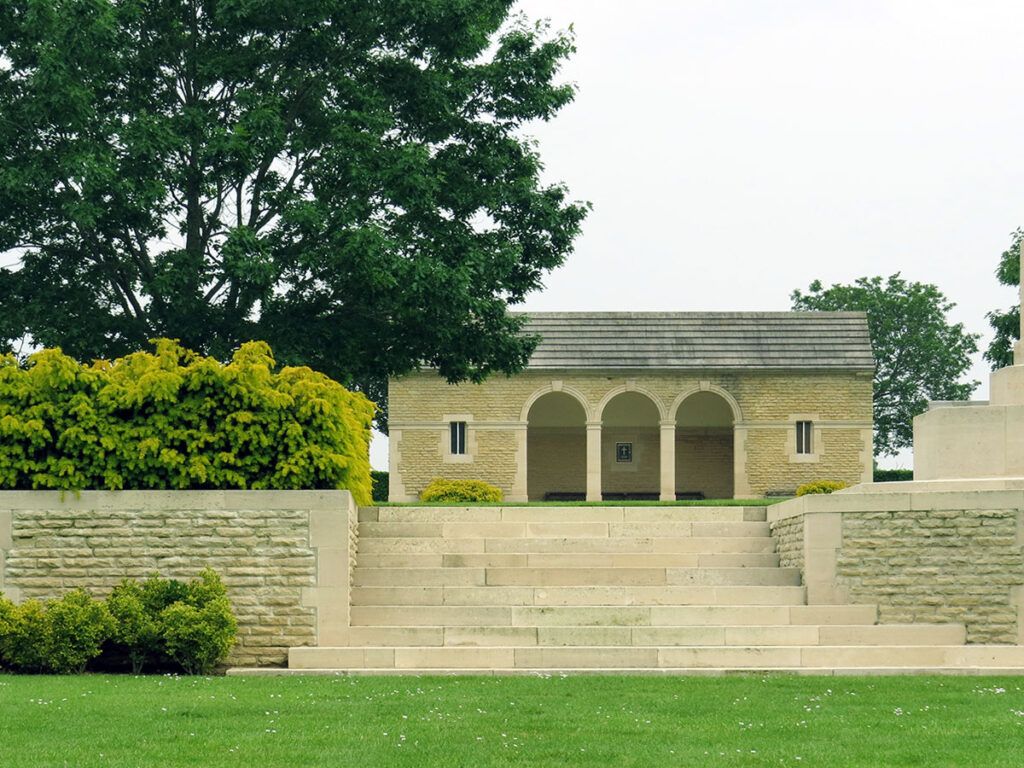
Museums and Cultural Spots
The Bayeux Tapestry Museum houses the famous 11th-century embroidery depicting William the Conqueror’s invasion of England. You’ll be amazed at this 70-meter-long medieval masterpiece that tells a complete historical story.
The Museum of the Battle of Normandy in Bayeux provides comprehensive exhibits on the D-Day landings and subsequent campaigns. Interactive displays help you understand the military strategies and human stories behind Operation Overlord.
Bayeux Cathedral stands as a magnificent example of Norman-Romanesque architecture. Its soaring interior and beautiful stained glass windows are impressive even if you’re not usually interested in churches.
The Caen Memorial Museum offers one of Europe’s best World War II exhibitions. You’ll gain a deeper understanding of the war, the occupation, and the liberation of Normandy through powerful exhibits and personal stories.
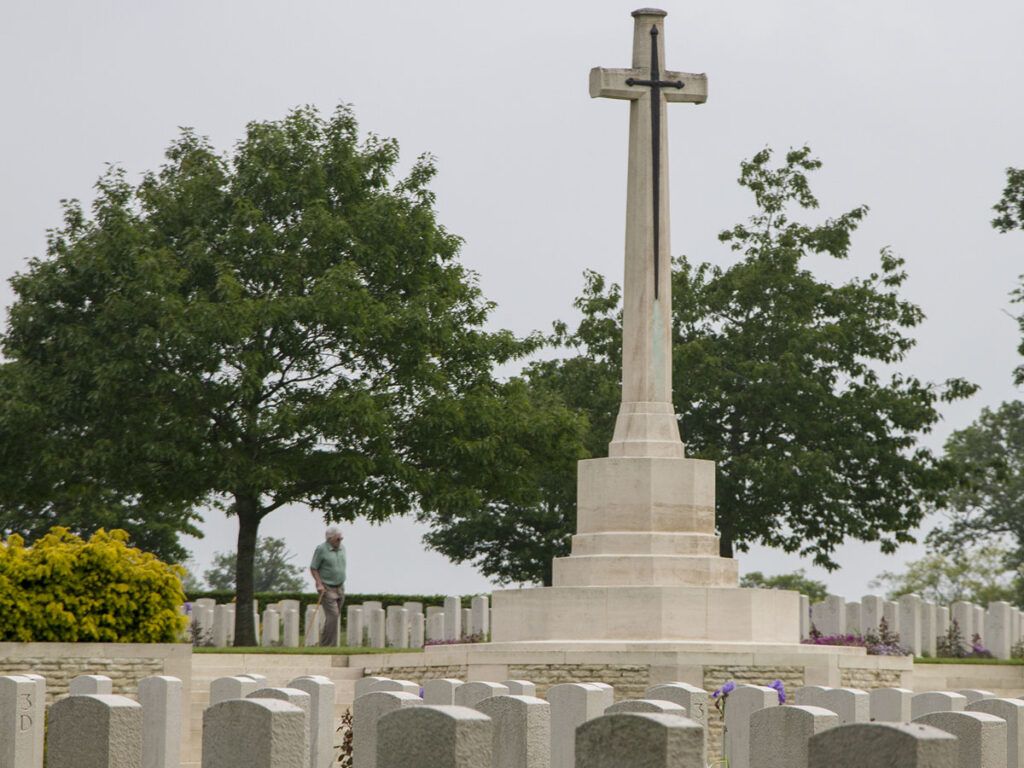
Why It’s Worth Visiting
Hottot-les-Bagues War Cemetery offers a moving and important historical experience for visitors interested in World War II history. This beautifully maintained cemetery holds over 1,000 casualties, most of whom fell during the critical June and July 1944 operations following D-Day.
The cemetery’s thoughtful design includes a slight slope that creates a unique and visually interesting layout. This gentle terrain gives the memorial grounds a distinctive character that sets it apart from other war cemeteries in the region.
You’ll appreciate the meticulously kept grounds with their lovely floral arrangements that add color and life to this solemn place. The Commonwealth War Graves Commission maintains the site with great care, ensuring a dignified resting place for the fallen.
As you walk among the headstones, you’ll connect with individual stories of sacrifice and courage. Each grave represents a person who gave everything during the Allied push through Normandy.
The cemetery is also less crowded than some of the more famous D-Day sites, giving you space for quiet reflection. You can take your time to absorb the significance of what happened here without feeling rushed.
For history enthusiasts, this site offers valuable context about the battles that followed the initial landings. The cemetery holds soldiers who fought in the difficult campaigns to secure the region after the beaches were taken.

